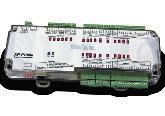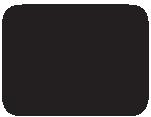
Marine Engineering & Naval Architecture
Marine Engineering Underpinning









Marine Engineering Underpinning







better – worldwide.

Modularenclosuresystems Climatecontrol Powerdistribution ITsystems
•
Enclosure systems
Small enclosures
Command Panel & support arm systems
Console systems
Stainless steel & industry solutions
Network &
server enclosures
IT wall-mounted enclosures
Outdoor enclosures
Roof-mounted & wallmounted cooling units
Enclosure heaters •
ENCLOSURESPOWER
Recooling systems
Air/air or air/water heat
exchangers
Fan systems
Modular kit for lowvoltage switchgear IEC61439 up to 5,500 A 60mm system technology power distribution and controls up to 1,600 A
• • • Integrated DC solutions
Consultancy, planning structural design
Physical security
UPS systems
IT climate control
Monitoring systems

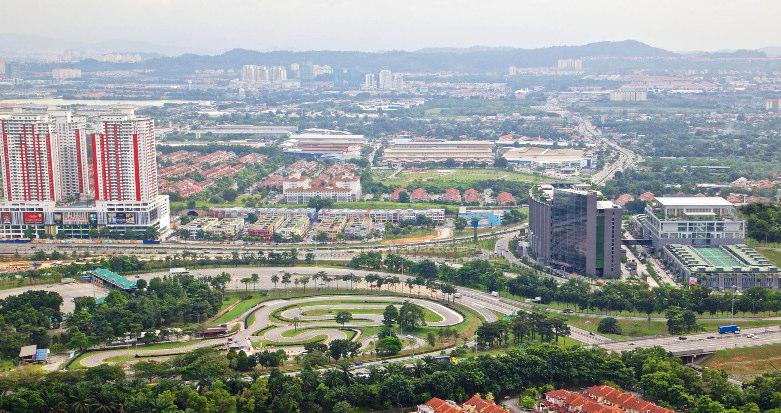
One City at USJ25 Subang Jaya Selangor, is set to be the ideal platform for businesses to thrive within a true cosmopolitan setting. The platform is made up of the completed Garden Shoppe and Sky Park, and awaiting the completion of The Place & The Square.
An iconic development like this needs to be durable and sustainable for many generations to come. Xypex Admix C-1000NF has been used in the mentioned structures of the sub-structures, driveways, green landscapes and water features, just to name a few. Its ability to selfheal static hairline cracks up to 0.4mm wide, resist extreme hydrostatic pressure, and chemical protection, will contribute to enhancing the durability and sustainability of these structures.
For more information on how our solutions can help your concrete assets, please visit our website at www.xypex.com.au or LinkedIn Page.

yaNg DIpERtUa / pREsIDENt:
Y.Bhg. Dato’ I . Li Cho Ho k
tIMbalaN yaNg DIpERtUa / DEpUty pREsIDENt:
Ir. Tan Yean Chin
NaIb yaNg DIpERtUa / VIcE pREsIDENts:
Ir. P.E. Chong, Ir. Prof. Dr Wan Mahmood bin Wan Ab. Majid, Ir. Prof. Dr. Lee Teang Shui, I . Da id Lai Ko g Phooi, Y.Bhg. Dato I . D A d “eo Kia Ha , I . Lee We g O , I . Gopal Na ia Kut
sEtIaUsaha KEhoRMat / hoNoRaRy sEcREtaRy: Ir. Gunasagaran a/l Kristnan
bENDahaRI KEhoRMat / hoNoRaRy tREasURER:
I . P of. D Jef e Chia g Choo g Lui
bEKas yaNg DIpERtUa tERaKhIR / IMMEDIatE past pREsIDENt: I . Choo Kok Be g
bEKas yaNg DIpERtUa / past pREsIDENts:
Y.Bhg. Dato’ Ir. Pang Leong Hoon, Y.Bhg. Academician Dato’ Ir. (Dr) Hj. Ahmad Zaidee bin Laidi , Y.Bhg. Dato’ I . D Gue “ee “e , Y.Bhg. Datuk I . P of. D O Chee “he g, Y.Bhg. A ade i ia Dato’ I . P of. D Chuah Hea Teik
WaKIl aWaM / cIVIl REpREsENtatIVE:
Ir. Prof. Dr Mohd. Zamin bin Jumaat
WaKIl MEKaNIKal / MEchaNIcal REpREsENtatIVE: Ir. Dr Kannan M. Munisamy
WaKIl ElEKtRIK / ElEctRIcal REpREsENtatIVE:
I . Ali Aska i “he Moha ad
WaKIl stRUKtUR / stRUctURal REpREsENtatIVE:
Ir. Hooi Wing Chuen
WaKIl KIMIa / chEMIcal REpREsENtatIVE:
Ir. Prof. Dr Abdul Aziz bin Abdul Raman
WAkIL LAIN-LAIN DISPLIN / REPRESENTATIVE TO OTHER DISCIPLINES:
Ir. S. Kumar a/l Subramaniam
WaKIl MUltIMEDIa / MUltIMEDIa REpREsENtatIVE:
I . A dul Fatah i Mohd. Yai
ahlI MaJlIs / coUNcIl MEMbERs:
Ir. Lee Boon Chong, Ir. Tu Yong Eng, Ir. Lai Sze Ching, Ir. Yap Soon Hoe, Ir. Li Thang Fai, Ir. Juares Rizal bin Abd. Hamid, Ir. Norazman bin Mohamad Nor, Ir. Ellias bin Saidin, I . Asso . P of. D Ji Mok Vee Hoo g, I . D Ta Chee Fai, I . Kok Hee Poh, I . Tio g Ngo Pu, I . Yau Chau Fo g, I . Teh Pia Ngi, I . Ta Yuh He , I . Cho g Chi Meo , I . Chi Kua H a, I . Asso . P of. D Vig a Ku a a Ra a ha da a u th ,
I . Lee Che g Pa , I . O g Chi g Loo , I . Ga Li E g H a, Y.Bhg. Dato’ I . Noo Az i i Jaafa , I . A i uddi i Mohd. Baki, I . Mohd. Radzi i “alleh, I . O g “a g Woh pENgERUsI caWaNgaN / bRaNch chaIRMaN:
1. Pulau Pinang – Ir. Paul Phor Chi Wei . “elata – I . Da id Lee Loke Hai . Pe ak – I . D Pe u al Nallago de . Kedah-Pe lis – I . Chua Teik “e g
5. Negeri Sembilan – Ir. Hj. Baharuddin bin Ahmad Nasir
6. Kelantan – Ir. Hj. Syed Abdul Rahman bin Syed Abdullah . Te e gga u – I . Hj. A dullah )a a i i Mohd. No . Melaka – I . Nu Fazil Noo Moha ed . “a a ak – I . Ke Thia Boo Khui
10. Sabah – Ir. Tan Koh Yon
11. Miri – Ir. Steven Chin Hui Seng
12. Pahang – Ir. Tuan Haji Ahmad Kamal bin Kunji
ahlI JaWataNKUasa INfoRMasI DaN pENERbItaN / staNDINg coMMIttEE oN INfoRMatIoN aND pUblIcatIoNs 2014/2015: Pengerusi/Chairman: Ir. Prof. Dr Lee Teang Shui Nai Pe ge usi/Vi e Chai a : I . D Ta Chee Fai “eiausaha/“e eta : I . Lau Tai O Ketua Pengarang/Chief Editor: Ir. Prof. Dr Lee Teang Shui
Pe ga a g Bulei /Bullei Edito : I . Mohd. Khi Muha ad Pe ga a g P i sipal Ju al/P i ipal Jou al Edito : I . P of. D Do i i Foo Ch a Yee Pe ge usi Pe pustakaa /Li a Chai a : I . C.M.M. A oo u ke Ahli-Ahli/Co itee Me e s: Y.Bhg. Datuk I . P of. D O Chee “he g, E g . A dul Fatah i Moha ed Yai , M.I.E.M, I . Ka a a/l M. Mu isa , I . “io Yu To g, I . Chi Mee Poo , I . Yee Thie “e g, I . Tu Yo g E g, I . O g Gua Ho k, E g . Aida Yaz i Mohd. Khai i, E g . Kok Ji g “hu
lEMbaga pENgaRaNg/EDItoRIal boaRD 2014/2015: Ketua Pengarang/Chief Editor: Ir. Prof. Dr Lee Teang Shui
Pe ga a g Bullei /Bullei Edito : I . Mohd. Khi Muha ad Pe ga a g P i sipal Jou al/P i ipal Jou al Edito : I . P of. D Do i i Foo Ch a Yee IEM “e eta iat: Pa ela Jita , Mi deelia i i i A i

th I te aio al Co fe e e o Co ete E gi ee i g a d Te h
2014 (coNcEt 2014) The e: Co rete I ovaio s a d Its Adva
12 – 14 august 2014 G a d Do set Su a g Hotel, Sela go Email: concet2014@iem.org.my Fo o e i fo aio , please o ta t the IEM “e eta iat Ms. )ai u Moha ed Ra i (03-7968 4019, zainun@iem.org.my)orreferto www.myiem.org.my.
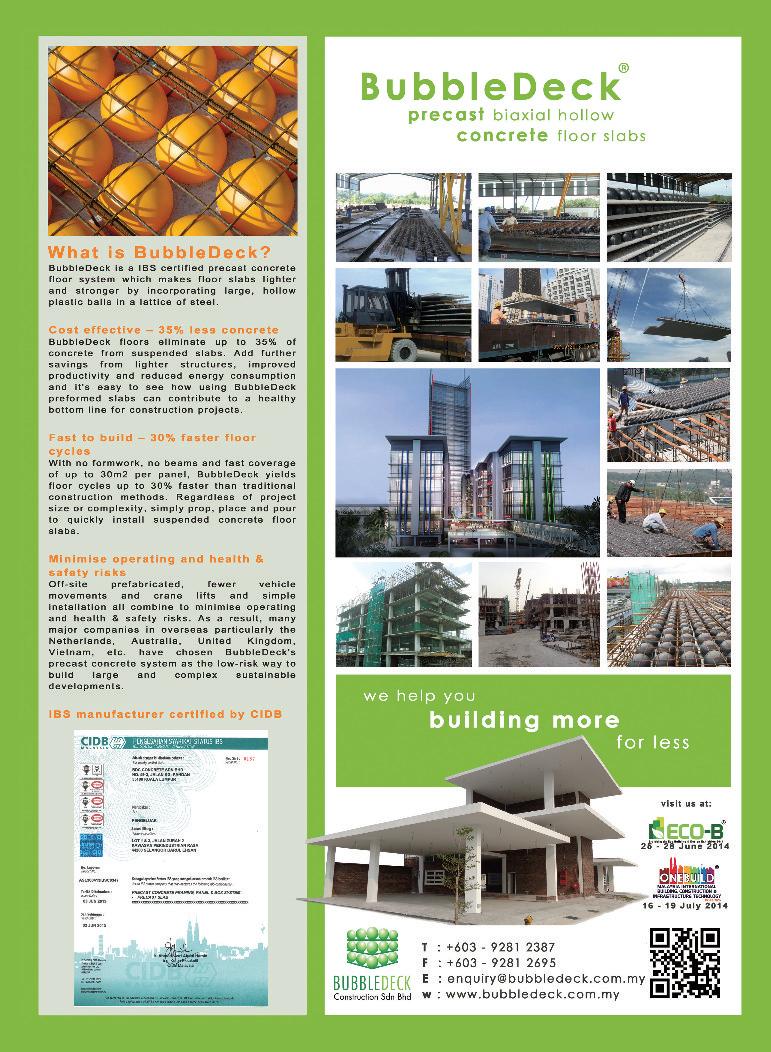
diMEnsion pUblishing sdn. bhd. (449732-T)
Le el - - , PJX-HM “hah To e , No. A, Pe sia a Ba at, Petali g Ja a, “ela go Da ul Ehsa , Mala sia. Tel: + Fa : + E- ail: i fo@di e sio pu lishi g. o We site: .di e sio pu lishi g. o
Chai a ROBERT MEBRUER CEO/Pu lishe PATRICK LEUNG
Ge e alMa age “HIRLEY THAM shirley@dimensionpublishing.com
Busi essDe elop e tMa age JO“EPH HOW joseph@dimensionpublishing.com
Edito TAN BEE HONG bee@dimensionpublishing.com
W ite C.C. TAN cctan@dimensionpublishing.com
C eai eP odu io Ma age LEE “IEW LI siewli@dimensionpublishing.com
G aphi Desig e NABEELA AHMAD beela@dimensionpublishing.com
Se io Ad e isi gE e ui e MA“AKI YAP masaki@dimensionpublishing.com
A ou ts u Ad i E e ui e YONG YEN YIN yenyin@dimensionpublishing.com
Fo ad e ise e t pla e e ts a d su s ipio s, please o ta t: DIMENsIoN pUblIshINg sDN. bhD. (449732-T) at + , o E- ail: i fo@di e sio pu lishi g. o
Su s ipio Depa t e t E- ail: su s ipio @di e sio pu lishi g. o
P i ted
hoffsEt pRINtINg sDN. bhD. -V No. , Jala TPK / , Ta a Pe i dust ia Ki a a, Pu ho g, “ela go Da ul Ehsa , Mala sia. Tel: + Fa : +
Maile
PERFECT MAIL SERVICES. -P
Jala T“B , Ta a Pe i dust ia “u gai Buloh, “u gai Buloh, “ela go Da ul Ehsa , Mala sia. Tel: +
JURUtERa MoNthly cIRcUlatIoN: 30,000 copIEs
“u issio o pla e e t of a i les i JURUTERA ould e ade to the:Chief Edito
THE IN“TITUTION OF ENGINEER“, MALAY“IA IEM Ba gu a I ge ieu , Lots & , Jala / , P.O. Bo Jala “ulta , Petali g Ja a, “ela go . Tel: + / Fa : + E- ail: pu @ie .o g. o se @ie .o g. IEM We site: htp:// . ie .o g.
© , The I situio of E gi ee s, Mala sia IEM a d Di e sio Pu lishi g “d . Bhd.
pUblIcatIoN DIsclaIMER
The pu li aio

by Captain Ir. Hj. Rani bin Mohd. Raji RMN (Ret) Chairman, Marine Engineering and Naval Architecture Technical Division, IEM
MalaysIa is a a ii e aio ith a total ou da of , k , iles of hi h , k o , iles is oastli e. Ma ii e a i iies a d the a ii e elated i dust ies ha e o t i uted to ou aio ’s e o o i g o th a d thei i po ta e has ee e og ised.
The “t aits of Mala a is o side ed to e o e of the hoke poi ts of the o ld, ith o e tha , ships pl i g th ough a uall . But hile “i gapo e ides high o its o ld lass eputaio as the p o ide of hoi e fo a oad spe t u of a i e se i es, the Mala sia Ma i e E gi ee i g I dust has ot gai ed u h f o it i this o peii e a ket.“hip uildi ga d“hipRepai “B“R isa e o peii e usi ess, i te s of ost a d deli e i e. With ofe s of usi ess i e i es f o thei go e e ts, the Philippi es a d I dia a e e pe ted to ise to e o e ship uildi g aio s of “outh East Asia.
He e, the Go e e t e e tl set up the Ne E o o i odel th ough the f a e o k of the E o o i T a sfo aio P og a e ETP to p opel Mala sia i to ei g a top o ld lo aio fo ofsho e a d a i e e gi ee i g a ufa tu i g a d se i e- ased ope aio s. This o je i e is o e of the Naio al Ke E o o i A i iies NKEA to assu e the su ess of Visio .
Fo the a i e e gi ee i g i dust , a o g the “t ategi Pla s fo a e the aptu e of % of the “t aits of Mala a epai a ket, % of lo al e uildi g a ket a d % of “outh Chi a “ea ofsho e a ket. The suppo t of the go e e t a d added i e i es ill oost g eate o ide e a d e su e sustai a ilit i the i dust .
The “B“R st ategi pla as lau hed i . The Mala sia I dust -Go e e t fo High Te h olog MIGHT hel s this i iiai e, togethe ith the Asso iaio of Ma i e I dust ies of Mala sia AMIM . The i iiai e spe ii all add esses the “B“R i dust ith the ai of de elopi g sustai a le o peii e ess.
captain ir. haji Rani (age 67) is currently Chairman of Marine Engineering and Naval Architecture Technical Division (MNATD) of IEM. He was Director of Engineering with the Royal Malaysian Navy and later as Director of Shipbuilding Division at MSE (now known as MMHE).
Kindly note that the scheduled event below are subject to change. Please visit the IEM e site at . yie .org. y for ore i for aio o the up o i g e e ts.
-Da Wo kshop o Re o e ded Ea th uake Loadi g Model i the P oposed N.A. to EC fo Sa ah, Sa a ak & Updated Model fo Pe i sula Mala sia
– Jul
O ga ised Ci il & “t u tu al E gi ee i g Te h i al Di isio . IEM a d IEM Te h i al Co itee o Ea th uake
Joi tl O ga ised ith “ta da ds Mala sia
Ti e: . a. . to . p. . CPD/PDP: hou s
copyRIght
Ve ue: A ada Hotel Petali g Ja a
by Ms. CC Tan
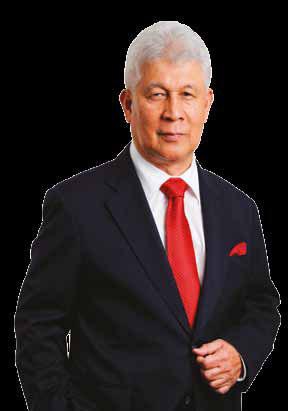

lAksAMAnA Madya Tan Sri Dato’ Seri Ahmad Ramli bin Haji Mohd Nor retired as Chief of the Royal Malaysian Navy (RMN) in 1999. But he is busier than ever. Not only has he taken on the heavy mantle of Managing Director of Boustead Heavy Industries Corporation (BHIC) Berhad, he is also currently president of the Association of Maritime Industries Malaysia (AMIM), Chairman of the Maritime Institute of Malaysia (MIMA), and Vice-Chairman of the Malaysian IndustryGovernment Group for High Technology (MIGHT). Here, he shares his thoughts on the maritime industry with JURUTERA
according to uNCTad statistics, the volume of international trade carried by sea in this region increases every year. What is the prospect like for the local marine industry?
Tan sri dato’ seri ahmad Ramli: I think the trafic in the Straits of Malacca and the volume of activity in our ports are certainly increasing. If I’m not mistaken, services at our ports has been growing at about 20% annually. This means trade is still very active.
There are lots of opportunities because when the ports are active, there will be a lot of services required, including providing assistance to ships in the form of tugging, repairs and so on. If these are better organised, it will be even better for the ports and the industry as a whole.
Q: are we – the players in the industry – strategising ourselves well?
Tan sri dato’ seri ahmad Ramli: From my own observation, there’s still a lot of room for improvement. We often ind that the real players are actually not locals but are from places like Singapore. This is why we have to be more competitive and we have to organise ourselves better.
Q: so is it because we’ve not been organising ourselves well that foreign players have come in so easily?
Tan sri dato’seri ahmad Ramli: Yes.As a business, you have to be good and competitive.At the end of the day, it’s all about money, which means we have to provide quality services at competitive prices. This will help attract more trafic to the ports too. This is something that we (the industry as a whole) have to push for. Of course, there are also policy issues that must be addressed to encourage the industry to grow.
Q: Would you like to name a few that we should look at?
Tan sri dato’ seri ahmad Ramli: In terms of encouraging the local marine industry, Singapore’s tax structure, for example, is more attractive. Here, the tariffs are not so competitive. So local players, especially shipbuilders, are inding it dificult to compete with China or even Singapore. The irony of it is that in Singapore, labour is so much more expensive.
Of course, this is something that both AMIM (Association of Maritime Industries Malaysia), ship owners and, to some extent, MIGHT (Malaysia Industry-Government Group for High Technology) are seeking to improve. Because the issue here is not that the government does not want to do it, but that we have competing interests. So it must be done in such a way that every interest group is balanced and synergised.
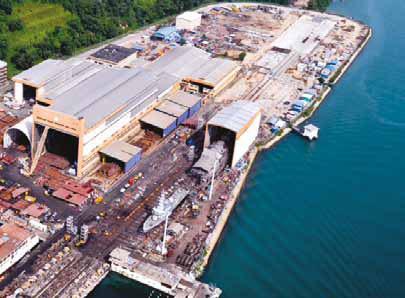
soit’sgotnothingtodowithalackofaggressiveness on the part of the industry players?
Tan sri dato’ seri ahmad Ramli: Put it this way – it’s a business venture. Everyone wants to go into business and they have to look at the bottomline. If the environment is such that they ind it dificult to compete, they will not invest. That’s the issue here. In a way, it’s a chicken and egg situation.
in 2011, the prime minister launched the shipbuilding and ship Repair (sbsR) industry strategic plan 2020. Can you briely tell us what the plan entails and how much of its target has been achieved?
Tan sri dato’ seri ahmad Ramli: Roughly, we want to capture a big portion of the activities with regard to shipbuilding and shiprepair because of our strategic location. I believe the Straits of Malacca is one of the busiest strait and the biggest too, second only to the English Channel. There is a lot of ship movement and a lot of calls at our ports. We also have activities in offshore oil and gas, as well as regional and local shipping activities. All these require services and ships. Yet, we have not been able to capture a fair share of the shipbuilding and shiprepair (works).
Currently, the oil and gas companies send their vessels to Indonesia,BatamorSingaporeandnewvesselsarecommissioned in China. We want to capture 80% of the local shipbuilding. At the same time, we don’t want to be competing with the likes of Korea or Japan which build huge vessels. So we’re trying to capture the lower-end market, such as vessels around 120m.
We also want to capture some of the international vessels that pass through, for repair and maintenance. So we have to improve our ship repair and maintenance facilities. We also want to capture 2-3% of the international (shipbuilding) market. It’s not much but it’s still a lot. Currently, we export about RM2 bil (in ships) a year. A lot of ships built in Malaysia are sold overseas, but we think we can do much better. We want to have fair, realistic targets and if we achieve these, we should be able to create about 55,000 jobs in the sector and probably have a turnover (annual) of about RM10 bil. But where we are at the moment? It’s not been reviewed yet.
Q:so we don’t know what we’ve achieved so far?
Tan sri dato’ seri ahmad Ramli: On our part, I think we’ve done quite a bit because we are, shall I say, one of the main players in the industry. This year the government has provided a special allocation of RM3 bil to assist the marine industry, so there is some recognition. Petronas is also giving out a lot more contracts – I won’t say these are for long-term, but they’re suficient for shipowners to obtain better facilities from the bank.
Q:Can you suggest some ways to fast track our achievement for this sbsR 2020?
Tan sri dato’ seri ahmad Ramli: The only way is to have a proper understanding of the requirements and at the same time, the government will have to create an environment that will encourage the industry to grow. We’re way behind compared to what the Chinese government or even the Singapore government is doing.
In China, banks are very generous to the players who also have very easy access to land for shipyards. There are also incentive schemes for the industry to go overseas.
Similarly, in Singapore, the tax structure is very supportive of the industry. I think this is probably because Singapore realises that, although Finance is now becoming the star-player, it must continue to create a sustainable environment to support the industry as it’s one of the busiest ports in the world and a marine hub. This is something where we have to come together – the industry, the government and all the stakeholders.
As mentioned earlier, there are many competing interests in the industry. In shipbuilding for example, there are people who like to monopolise certain activities but this has an impact on the industry. This is where I think all the stakeholders have to harmonise their requirements so that the government can come up with more balanced, friendly policies.
For example, people in Sabah and Sarawak complain that goods there are expensive because we restrict the transporation of goods within the country to Malaysian-lagged-and-owned vessels. But there are countries in the world which have policies that are much more stringent, like the American’s Jones Act. We don’t necessarily want to copy everything from them; we can see that on one hand, there’s this drive towards openness but on the other hand, people are not really as open as they say they are. So for us, the industry has to really harmonise and work towards being more competitive and eficient.
Q:in 2012, the government announced that developing malaysia as a shipbuilding and ship repair hub will be one of the Entry point projects under the business services thrust of the National key Economic areas (NkEas). Can you share with us this initiative and its achievements so far?
Tan sri dato’ seri ahmad Ramli: This is peculiar to BHIC because we’re one of the companies singled out to champion this activity, particularly in Peninsular Malaysia.
In this programme, we undertake to do various things. For example, we have to come up with our own ability to design a range of vessels. In this case, we want to design offshore support vessels (OSV) for the oil and gas industry because one of our problems is that we don’t have a full-ledged design house. So we depend on foreign design houses which would just give us the basic designs.
When it comes to the construction, the details and variations that are needed would only come in bits and pieces, depending on their speed and priority.
We cannot depend solely on these design houses. We have
(Continued on page 9)
to build our own. That’s why this year, we have to be able to design one OSV and build one by next year. I think we’re on track with that. We also have to train a certain number of design naval architects as well as about 100 skilled workers per year. By 2020, we have to create a new GNI (gross national income) of about RM500 million per year, which means that we have to be able to build, export and create jobs.
As for the building part, we need government assistance because many shipowners prefer to go to China which is cheaper. In order to have them commission one to be fully built here, the government must give shipowners incentives, such as a subsidy or some other form of encouragement.
Of course, at the same time, we have to be competitive ourselves. We actually did a rough industry survey and found that we are, in reality, competitive. For example, some shipowners who had tankers built cheaper elsewhere had to spend more later to make the vessels sea-worthy.
isn’t the government aware of the limitations that the industry faces?
Tan sri dato’ seri ahmad Ramli: The government is aware.
Then why is it so slow in responding to the changes in the environment?
Tan sri dato’ seri ahmad Ramli: Everyone’s agenda has to be harmonised. For example, shipowners want to buy cheap, but sometimes you don’t get what you really want. Some like to build overseas because they get to travel.
As long as everyone’s interests are not harmonised, the more active lobbyist will get his way but not necessarily to the interest of the country or the government. If ships are built here there’ll be economic spin-offs, but the government is so preoccupied with other things, so unless someone champions the cause... This is why AMIM, MIGHT and, to some extent MIMA, is initiating it. Unfortunately, I am in all three (laughs).
in the 2014 budget, the government had, as you mentioned earlier, allocated Rm3 billion in soft loans under the maritime development fund, through bank pembangunan malaysia. With this, do you foresee any growth in shipbuilding activities?
Tan sri dato’ seri ahmad Ramli: The bank has to be more sympathetic. The money is available but it will be dificult to get if conditions are too stringent.
If, for example, a bank asks for 30% ixed deposit before you can take a loan, that’s a big sum of money, especially for vessels in the region of RM30 million. Not many companies have that kind of money, especially shipowners. But of course, banks have to look at the security in getting repayment. So there must be a solution where the owners can get inancing while the banks are assured of repayment.
Q:What would you recommend to ensure local shipyards gain the most from this allocation?
Tan sri dato’ seri ahmad Ramli: We have an association, so we communicate all these things to the industry. We encourage players to bid for it and, if they have problems, to give us feedback. So far, we have not received any feedback.
Bank Pembangunan had encountered a bit of bad experience before, so perhaps it’s a bit wary now. Admittedly, you do need to come up with at least some fair portion of the cost, but if you don’t have that amount, you cannot do anything. Both sides have got to ind a compromise.
Perhaps Petronas, the major service consumer of these vessels, can give out ive-year contracts, which shipowners can use as collateral to build conidence – because, as we know, banking is about conidence.
If other notable associations of inancial standing, such as EPF (Employees Provident Fund), are to own ships, it will give further assurance to the bank that it will be getting repayment. All these (factors) have to come together so that everybody is secured, so that everybody can get their share of the market. It has to be a multi-partied approach and where everybody’s interests are protected.
“ We want to capture a big portion of the activities with regard to shipbuilding and ship repair because we are very strategically located.
”
Q:The government has awarded the building of 6 new warships to bHiC. What are the challenges faced in building all the ships locally?
Tan sri dato’seri ahmad Ramli: This project is worth about RM9 billion and is probably one of the single largest contracts in the country. Because of this, the demands are also very stringent and we have to be able to achieve international standards. It’s a good thing though because it raises our benchmark. That’s a challenge. But at the end of the day we have to have the right people to manage and implement the project.
Q: is getting the right people a problem?
Tan sri dato’ seri ahmad Ramli: It is but if we can’t get the best, we will get the next best and train them. A more established company, DCNS, will be assisting us. Yes, the challenge is there, but God willing, we will be able to achieve it.
Q: How is the progress so far?
Tan sri dato’ seri ahmad Ramli: We’re on track. We have virtually built the ship on paper. The way construction is done today, before you cut the steel, everything is predetermined. I think by next month we can virtually walk through the design. The irst steel-cutting should be next year.
Q:bHiC and dCNs have been given the responsibility for the maintenance of the RmN submarines. What is the progress of the transfer of technology between bHiC and dCNs?
Tan sri dato’ seri ahmad Ramli: Satisfactory, though I want more. I think we’ll meet the target next year. Some of the talents we need are dificult to get. We don’t have local people who can meet our demands. We’re training people but for them to reach the level we need, they must have a certain number of years of exposure. We will catch up. It’s satisfactory at the moment – at 70% – but there’s still a lot of work to be done.
Q:Can malaysia undertake the total maintenance of the submarine without the involvement of dCNs anytime soon?
Tan sri dato’ seri ahmad Ramli: We should be able to do the irst-line maintenance ourselves next year. The other challenge will be when we have to reit – that’s a major overhaul and one that we have to train more people for. For a major overhaul, you will sometimes have to to rebuild large parts of the submarine. We’re training people for that now.
Again, it’s another programme for the transfer of technology. A lot of Third World countries which buy submarines have to send them back to the builder for major overhauls. We are now working at doing it here.
The current trend is for local shipyards to partially build in China to reduce the cost. This could affect the future of shipbuilding in malaysia. How can this trend be reversed?
Tan sri dato’seri ahmad Ramli: All these will change eventually. Firstly, the Chinese government is inding it dificult to subsidise and secondly, when China improves, it won’t be as cheap as it is now. Meanwhile, the cost of labour in Singapore continues to be very high. So it will get more competitive.
At the moment, we are so open – anybody can take advantage of the loopholes in our policies. For example, Petronas has a policy of using only Malaysian-lagged vessels. But many Singaporean shipowners register their ships in Labuan and once you’ve registered there, you’re considered a Malaysian-lagged vessel. This is one thing we have to address.
Q:shiprepair facilities in the East Coast of the peninsula is very lacking. ships, especially OsVs, have to go to singapore, batam or the West Coast for repairs. What is amim or bHiC’s plan to enhance the facilities? What kind of support would you expect from the federal and state governments?
Tan sri dato’ seri ahmad Ramli: We’ve been telling our members of the opportunities available and to work with Petronas to encourage activities there. But Petronas can only do so much. Others will have to do their part. People will have to invest. So we encourage our members to look into these opportunities.
At the same time, the East Coast is quite limited in terms of natural harbours because of the monsoon and the river entrances there are subject to changes in currents. I know a lot of people who have tried to invest but they ind it more expensive than say, investing in the West Coast or even in Sabah or Sarawak. Having said that, we are not giving up.
Meanwhile, the State governments in the East Coast must be willing to help allocate suitable sites for the building of these facilities. At the moment, such sites are scarce and it’s not easy to access the current ones.
does amim or bHiC plan to expand the shipbuilding and shiprepair activities to neighbouring countries like myanmar?
Tan sri dato’ seri ahmad Ramli: That is very much a business decision. It’s not easy to convince people to invest but we do encourage our members to look into all opportunities. Like anything else, when you go to a new market, you have to be very, very sure; you must understand the market there.
Q:
What do you think of the competency of young engineering graduates? are they meeting the industry’s requirements?
Tan sri dato’ seri ahmad Ramli: There is plenty of room for improvement in how our engineering graduates are prepared. University graduates in Europe, (such as France and Germany) for example, are able to it in better to industry demands. They have a system where while they’re doing their studies, they’re also doing practical work in the industry.
Here, graduates may be very good with the theory part but they require a lot of exposure and retraining to it in. This is why we have the Young Engineers Programme where we recruit grads – generally those with CGPA 3.0 and above – and train them for a year. After that, they are encouraged to work with us and most of them do. So far we have recruited about 70.


That’s why we choose to innovate.
To create ultra-efficient residential scroll compressors that meet increasingly stringent labeling standards. To develop capacity modulation technologies for residential and commercial air-conditioning, providing the ultimate in human comfort. To invest substantially in compression technologies that use eco-friendly low-GWP refrigerants. As the leading partner for the HVAC & R industry, it’s our responsibility. And we wouldn’t feel comfortable if we didn’t fulfill it. www.EmersonClimateAsia.com
Emerson Electric (Malaysia) Sdn. Bhd.
Level M2, Blk A, Menara PKNS-PJ
Jalan Yong Shook Lin
Petaling Jaya, Selangor, Malaysia 46050
Tel: (603) 7949 9222 / Fax: (603) 7949 9333

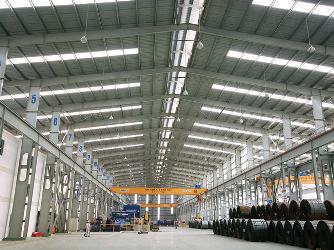
ZAMIL
STEEL BUILDINGS MALAYSIA SDN. BHD. (940962 – M)
Unit B-08-15, Gateway Kiaramas, No.1 Jalan Desa Kiara, Mont Kiara, 50480 Kuala Lumpur, Malaysia
Tel: (60-3) 6201 8925 Fax: (60-3) 6201 8926
Email: zsmalaysia@zamilsteel.com.my
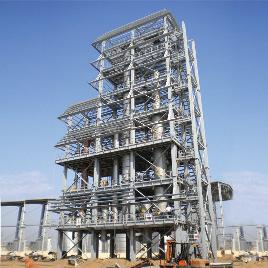

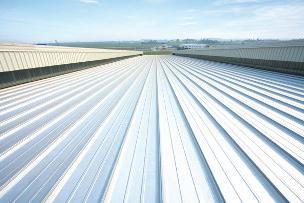
Providing economical and flexible solutions for industrial projects in Malaysia since 1997
engineer design fabricate supply install
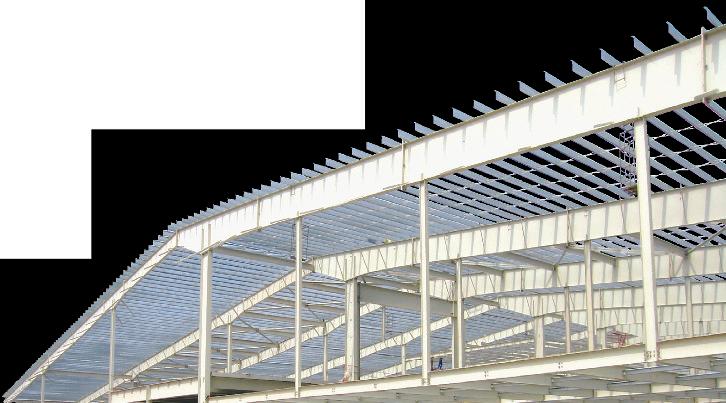
Currently, the marine industry climate in the country is growing in tandem with the needs of the maritime economic growth. The Shipbuilding and Ship Repair (SBSR) sector is a sub-set of the marine industry. Unfortunately, the marine sector is not one of the 12 NKRAs identiied under the Malaysian Economic Transformation Programme (ETP). However, the closest match would be the Oil, Gas & Energy Sector that may have some linkages with the SBSR contractors. The following extract is an encouraging statement by the Honourable Prime Minister.
“Oil, gas and energy are an essential driving force for any modern economy. Under the astute management of PETRONAS, the domestic oil and gas industry has played a crucial role in the growth of the Malaysian economy. However, after decades of oil and gas production, our domestic resources will inevitably start to deplete. To prepare for this, we will strengthen other value creating activities in the oil and gas value chain and ensure that we have a sustainable energy platform for the future. To this end, the Government will develop Malaysia into a leading oil and gas services hub in Asia, grow Malaysia’s role in oil storage, logistics and trading and import LNG to serve latent gas demand and attract newgas based industries. At the same time we will ensure that we develop an energy eficient, diversiied and sustainable energy mix to power our future.”i
With reference to the above statement, the mention of strengthening other value creating activities in the oil and gas value chain, has created a need for Offshore Support Vessels (OSVs), work-barges and accommodation modules that are really, in essence, vessels and structures that will somewhat increase the demands of shipbuilding and ship repair sector.
Going away from the ETP initiative, with reference to the document released by Maritime Institute of Malaysia (MIMA)ii, on the review of the 1st National Marine Industries Forum 2010 in Kuala Lumpur on 23rd March 2010, signiies the importance of the industry in the context of Malaysian economy, as a multiplier, employment generator, export earner and supporter of maritime transportation in relation to trade. Further on, the review emphasised the key activities in marine industry as:
• Shipyard industry

• Marine leisure
• Support services
What poses as challenges to marine industry contractors are:
• Small domestic market.
• Stiff competition (local).
• Shortage of skilled workers.
• Shortage of high technology facilities.
• Lack of capital/inancing to expand.
• Competition from neighbouring countries in pricing and delivery.
• Shortage of opportunities and if available are monopolised by bigger conglomerates.
The list of issues that the shipbuilding and ship repair sector faces, as mentioned in paragraph 2, is not exhaustive but for the purpose of discussion, these will sufice. For the purpose of discussion here, the limitation is conined to only contractors in Malaysia and Malaysian-owned bodies. Malaysian-owned contractors are usually home-grown from conception and are owned by locals with limited funding. Therefore, these are small to medium industries which need business and capital funding and sustainable cash low in order to survive.
Currently the demand for new ships-building and repair opportunities are limited and the market is shrinking. The reason for this is partly because ships generally last 25-30 years and ship owner will usually keep the vessel till the end of its life. Secondly, the high operating costs of periodic docking and repair of vessels can add up to a heavy toll on the owners’ pockets. Because of this, owners will stretch the operations time for as long as possible or until it is absolutely necessary to send the vessel to dock.
As explained, the number of ships or vessels going to docks and shipyards for repairs is limited and this number is divided among local shipyards currently able to service the vessels. Competition is indeed stiff. Price wars are common and under-cutting quotations is widespread. The net result means that smaller shipyards which are merely surviving, will be adversely affected. So too will contractors depending on these shipyards. In the long term, the reduced number
of vessels sent to shipyards for repair will signal the demise of such contractors.
To add salt to the wound, a shortage of skilled workers aggravates the situation as this reduces the capability of contractors who will then not be able to complete the work on time or within the correct quality standards. Sub-standard workentailsre-workandre-workmeansdelaysandadditional costs for the contractors. Naturally, ship owners are reluctant to have to spend more than necessary, especially when the fault lies with the shipyards and contractors entrusted with the repair of their vessels. Delays also mean the owners will lose revenue from charter hire and leasing. One reason contributing to the shortage of skilled workers is that they prefer to work elsewhere as, in shipyards, they may not be sure when they will get the next repair job.
Many local shipyards are not able to acquire high technology equipment because this is expensive. For those that have, it means a long higher purchase agreement on their hands and this adds to their monthly overheads. Some shipyards will transfer the burden of specialised tools and high technology equipment to their contractors and now, the risk lies with the contractors, along with the high overheads. It will be more dificult for contractors to survive if jobs are scarce and they have to maintain high overheads. Part of the reason is that the bigger, cash rich conglomerates often take the bigger chunk of shipbuilding and ship repair projects because smaller shipyards and contractors are incapable of investing in high technological facilities to do the job.
When shipyards are hit by a reduced number of jobs, the direct impact will be inancial. Our local banks are very strict about giving out loans and when they do, the conditions set are stiff. The inability to expand will mean stagnation of repair and building capacity and this deinitely hampers shipyards and contractors.
If the stagnation or decline in the number of repair and building jobs can slowly kill off local marine contractors, competition from foreign neighbours who have been in the marine industry much longer is a bigger and more real challenge. These are not only cheaper but they can also do the jobs faster. Much can be debated with regards to the quality of workmanship but for ship owners, the fundamental bottom line is “cost” and how quickly the vessels can be readied to facilitate chartering. Countries like China have grown fast and even overtaken traditional SBSR countries such as Korea and Japan. The Government should take drastic action to regulate ships with Malaysian lag to be maintained in-country despite a slight hike in pricing, to facilitate experience and exposure, and it should be done for the survival of local marine contractors.
Controlled by bigger Conglomerates
Alas, when local marine contractors try to spread their wings and become a bit bolder, they run smack into competition with big local conglomerates and Government Linked Companies (GLCs) which have an edge over the small time contractors with little capital to fund the projects



and insuficient sustainability capacity. It seems to have become the norm for mega projects to be entrusted to big conglomerates via turnkey projects. Even when marine contractors manage to get a piece of the project package, it will be very dificult for them to fend off competitors with strong links with the conglomerates. Eventually they get squeezed out and all efforts put in as well as money spent to bring in Overseas Equipment Manufacturer (OEM) representatives will turn to dust. The plight of marine contractors are never seen as an issue that requires looking into but if the situation prevails, small marine contractors will perish or barely survive.
It may appear that the future for marine contractors is bleak. One of the fundamental approaches to this is Strategic Management. In meeting the challenges heads-on, marine contractors must focus on formulating, implementing and evaluating cross-functional decisions in order to achieve the set objectives. It encompasses the following, by integratingiii:
• Management
• Marketing/inance
• Production/operations
• Research & development, and
• Information systems
Marine contractors which have the ive elements embedded in their strategy plans, will have a higher survivability rate. To achieve these, contractors need to invest and continuously improve their capabilities and capacities.
However, preparing themselves strategically is not enough,asmarinecontractorsmustthenbuildtheirbusiness along the platform that has the following elementsiv:
• Leadership capability
• Business plan that is far reaching and well mitigated in risk aspects
• Develop competent work force
• Focused on product and service excellence
• Solid marketing plan
• Perfected sales plan
The above elements are essential for building a great business. Entrepreneurial enthusiasm and business acumen are traits that contractors must have and need to continuously develop to assure success.
In light of the current economic climate – where the cost of living is increasing, raw materials for industrial purposes are dificult to acquire, labour prices are increasing (especially with the imposition of minimum wage), tighter Immigration rulings and many other impediments – marine contractors are inding it dificult to survive and sustain their business.
The challenges are very real and will always pose as a threat against success. However, focusing on the remedial actions suggested in the above paragraph should afford some solutions in meeting and circumnavigating the hurdles. Building a solid strategy plan and managing it well with relentless vigour and extreme perseverance, marine contractors have a possible chance of surviving and, coupled with the attributes that are pre-requisites to a successful business venture, will lead to more competitive market participation.
In summary, the challenges faced by local marine industry contractors will prevail and it is entirely up to them to meet the challenges using the most appropriate approach. An approach aligned to strategy management and best business practices will produce marine contractors that are focused and competent, not only technically but also in business and the ability to pursue market forces.
[1] i//etp.pemandu.gov.my.etphandbook
[2] ii//www.mima.gov.my
[3] iiiStrategic Management Concepts & Cases by Fred R David, Pearson Education, 14th Ed, 2013 pp35-36.
[4] ivNow Build a Great Business, by Mark Thomson & Brian Tracy, Amacom Printers, 2011. Ed 1.
first Admiral dato’ ir. Ahmad Murad bin omar (Rtd) is an accomplished Chartered Marine Engineer (CMarEng) and Chartered Engineer (CEng). With a career in the marine sector for more than 30 years, Dato’Ir. Murad has wide experience in marine consultancy and matters related to shipbuilding and ship repair technology”.
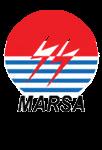

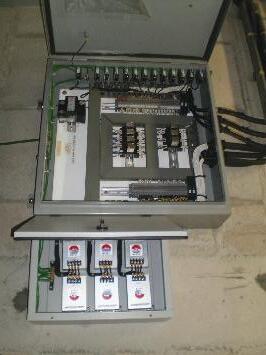
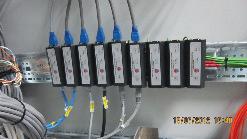
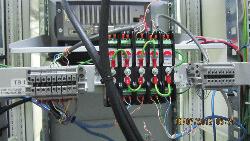

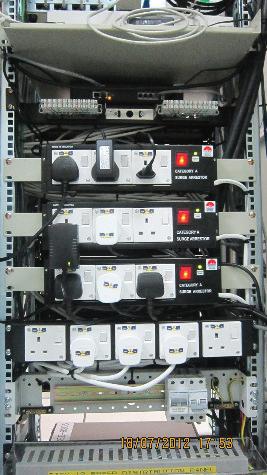

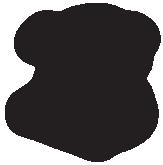

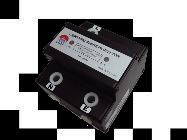


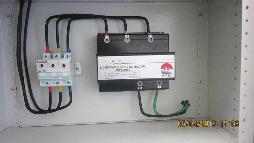



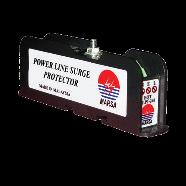
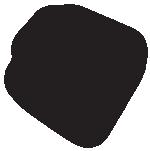

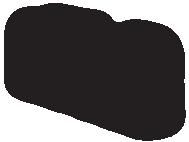



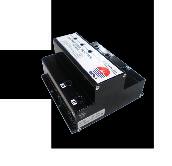






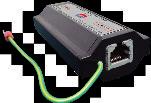
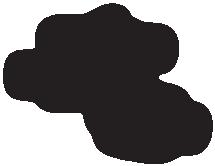

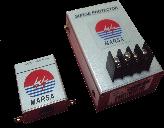







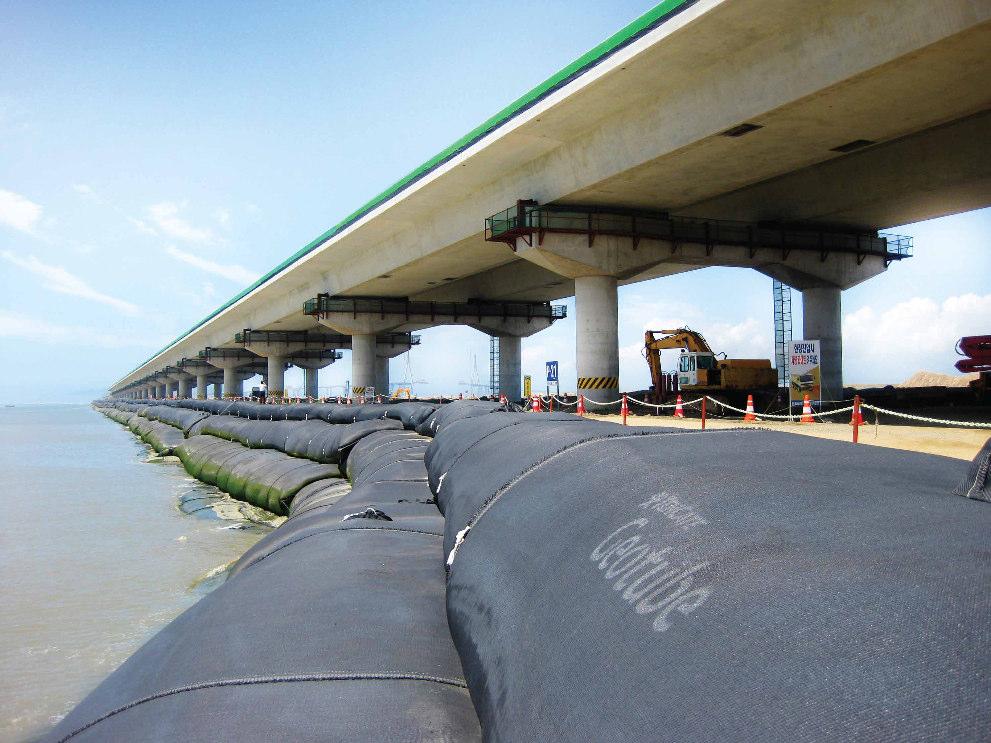


iNlaNd Waterway Transportation System (IWTS) is one of the modes of transport. Generally, waterways are categorised into natural and artiicial. Rivers and lakes exist naturally as the result of geographically terrain while canals are artiicial waterways created by man.
An inland waterway transportation system comprises facilities such as locks, inland port, weir, dock, navigation aids and bridges to facilitate navigation of vessels. Studies show that IWTS has advantages over other modes of transport. Studies also show that IWTS is the cheapest and least demanding on land acquisition, energy, labour, resources and mostly environmental beneits [1].
The philosophy of management has changed signiicantly, adapting to the environment. The management of water resource for transportation is a process of planning and controlling the resource in order that it can serve the purpose. The use of natural water resource for IWTS will change the physical characteristic and natural behaviour of the rivers. Furthermore, development of rivers for transportation will also change the economic value of the rivers as well. A well-designed IWTS requires an understanding of the problem, assembly and evaluation of all pertinent facts and development of a rational plan [2].
The main objective of waterway management is to maintain and protect the waterway environment. Good management practices should be able to provide an eficient and cost effective inland waterway transportation system, which is competitive with other modes of transport. In order to manage the inland waterway transportation system effectively, all criteria (water quality, safety standards and soil erosion) must be taken into consideration.
1.0
There are several deinitions of inland waterway transport system. One common one used for the compilation of relevant statistics is from The Department of Transport (DOT) of the UK [3] and is as follows:
An inland waterway is deemed to include all water areas available for navigation that lie inland of the “inland waterway boundary”. This boundary will correspond to the seaward point of any estuary, which it would be reasonable to bridge or tunnel. Inspection of UK estuaries leads us to conclude that this is where the width of water surface area is both less than 3 km at low water and less than 5 km at high water (springs). However, vessels without load lines
are legally allowed to trade anywhere within the Partially Smooth Water Area (PSWA). The summer boundaries of PSWA are often far downstream of the inland waterway boundaries. The area between these two boundaries is deined here as “sheltered water”. In the UK for example, the waterway classiication system speciically designed for the survey of the oficial waterborne freight statistic classiied into several categories (Table 1).
Table 1: Waterways classiication in UK
A9.0m plus draught
B 4.5m - 8.9m draught
C 3.0m - 4.4m draught
DLess than 3m draught, barges 551 - 850 tonnes
E Less than 3m draught, barges 351 - 550 tonnes
FLess than 3m draught, barges 151 - 350 tonnes
G Less than 3m draught, barges 51 - 150 tonnes
Source: DOT [3]
People used rivers as a natural mode of transport in the past when roads and rails were not well developed. Later, river transport faced competition from other modes of transport. Despite their fast speed and lexibility, however, other modes of transport contributed signiicantly to both congestion and environmental damage owing to their explosive and, even now, unchecked growth. Hence, these have become relatively uneconomic.
There is a growing awareness that rivers has a great potential as an alternative mode of transport to the existing road and rail networks. In dificult terrain that has substantial river networks, the option offers real economic development potential as conventional transport systems are currently unavailable. In general, the role of rivers can be broadly categorised as follows:
i. leisure and Recreation
These include boating, boat building and services, pleasure cruising, angling, swimming, water-skiing, camping, etc.
ii. Water supply and Water Transfer
Rivers provide water for industrial, domestic and agricultural which is drawn from surplus areas to water deiciency areas.
iii. drainage
Rivers remove surplus rain or other water, conveying it to a large body of water where it can be safely absorbed i.e. lood control.
iv. Hydro-electricity
To generate electric power supply to consumers.
v. Transportation
Rivers can be used for transportation for both people and cargo.
EnViRonMEnT
Eficient freight transportation systems can play a positive role in the economics of a country as well the quality of life of its population. While these are essential, there is growing concern over their signiicant negative environmental impact including pre-emption of land, disruption of topography, use of energy and resources as well as noise and air pollution [4].
Commercial transportation, which depends largely on fuel, contributes signiicantly to pollution levels. Therefore, we should think of the management of both the availability of energy resources and the environment before making a balanced decision about each transport mode.
Unlike other modes of transport, however, inland waterways can contribute a number of advantages to the enhancement or improvement of the environment [5]. Waterway transport is environmentally less harmful than other modes of transport in terms of noise and pollution. It is also cheap. In addition, inland waterway transport offers direct environmental beneits compared to other means of transportation.
i. Noise and Vibration
Unlike river transportation, the main contributors to transport noise are road, air and rail transportation [6]. In general, trafic noise is mainly felt in the urban areas.
ii. Visual intrusion
Waterways cause little in the way of visual intrusion. In fact, they can even enhance the appearance of an area.
iii. pollution
Waterway vessels do pollute the rivers to some extent. However, most water pollution comes from the irresponsible acts of industries located along the waterway.
iv. atmospheric Emissions
Transport emissions in the UK produced 57% of nitrogen oxide, 91% of carbon monoxide and 42% of
volatile organic compound [7]. A study carried out in the Netherlands in 1980 shows the levels of air emission from different modes of transport [8] (see Table 2).
4.0 pARAMETERs of RiVER MAnAgEMEnT on EnViRonMEnT
Management of rivers for sustainable inland waterway transport requires consideration on related issues as discussed in the following sections.
5.0 MAnAgEMEnT of EnViRonMEnT QUAliTY
Itcanbeexpectedthatthedevelopmentofawaterwaysystem for transportation will have some effect on the environment. Poorly planned and badly managed waterways are not only a threat to the safety of the vessels, users and freight but also to the environment. Thus, IWTS management system on water quality is among the major aspects to be considered. The standard of clean water is based on parameters such as pH (alkalinity and acidity), turbidity, BOD (biochemical oxygen demand), COD (chemical oxygen demand), TOC (total organic carbon) and TOD (total oxygen demand), heavy metals and inorganic solids.
Transportation activities along waterways will invariably affect the water quality. Vessel discharges, spills and grounding can result in minor damage to shellish farms and even cause beaches to close. [10]. To maintain adequate depth of waterways, dredging will cause the degrading or pollution of water. In particular, dredging with open water discharge will activate dormant organic matter and increase turbidity and BOD.
The most appropriate measures in water quality control are the elimination of direct sources of pollution. Waste from boat operations and maintenance include pollutants such as petrol, oil, grease, solid waste, trash, lead, copper and detergent [11]. Increased pollutant loadings may result from facility construction, vessel discharges and accidental spills [12]. Other wastewater emanates from four primary sources as follow [13]:
i. Municipal sewage
ii. Industrial wastewaters
iii. Agricultural runoff
iv. Storm-water and urban runoff
Management of boat sanitary waste discharges includes the installation and proper use of equipment onboard the vessels and onshore equipment for collection and disposal [11]. Another effective mean of managing boat sanitary
waste discharges would be to educate boaters about the potential health risks associated with the discharge of sewage. Table 3 shows the processes applicable to wastewater treatment.
Table 3: Processes applicable to wastewater treatment
Biodegradable organics(BOD)
Suspended solids (SS)
Refractory organics (COD,TOC)
Nitrogen
Phosphorus
Aerobic biological (activated sludge), aerated lagoons, trickling ilters, stabilisation basins, anaerobic biological (lagoons, anaerobic contact), deep-well disposal
Sedimentation, loatation, screening
Carbon adsorption, deep-well disposal
Maturation ponds, ammonia stripping, nitriication, ion exchange
Lime precipitation;Al or Fe precipitation, biological co precipitation, ion exchange
Heavy metalsIon exchange, chemical precipitation
Dissolved inorganic solids
Source: [14]
Ion exchange, reverse osmosis, electro dialysis
6.0 sEdiMEnT MAnAgEMEnT
Utilisation of water resource for transportation is highly dependent upon the maintenance of adequate navigation depth. Dredging is one of the methods of maintaining adequate navigation depth. In future, as ships increase in size and numbers on waterways, dredging will play a vital roleinmaintainingadequatedepthinwaterways.Thevolume of dredge materials will increase as well. The disposal of dredged material is usually the major problem faced by waterways management for transportation. Overall, proper sediment management will reduce the frequency of, if not eliminate, dredging work.
Reducing the amount of sediment entering the waterway will mean less need for frequent dredging. Besides carry out the dredging work to maintain adequate depth for passage of vessels, the management of waterways for transportation should, together other authorities involved in river basin management, also try to control the volume of sediment entering the rivers.
7.0 nATURAl hAbiTAT MAnAgEMEnT
Buffer zone protection will need a management programme to encourage the growth of native species and discourage invasive non-native species. Environmentalists and botanists strongly advocate an active programme to control non-native plant species and to support existing wildlife populations. As the irst step in developing and implementing a management plan, nature conservancy programmes should make an assessment of non-native plants. The plan should call for the elimination of nonnative species and the replanting of native stock as well as monitoring this on a long-term basis.
The goals should include restoring marginally productive agricultural lands into natural habitats, ripping up pavements in areas that won’t contribute substantially to the local economy and restoring the natural habitat, protecting headwaters on both the main stem and tributaries and ensuring continuous natural vegetation along at least one bank for as much as possible of the river corridor proper.
Many inland waterways around the world have proved proitable and there exists a strong commercial reason for keeping them open as well as for further improvement and new development. Where similar conditions exist - in terms of geography, demand and potential development of trade, environmental enhancement, etc. – the opportunity for a new waterway development should take into consideration the proper management of the environment.
Inland transport provides cheap and eficient haulage. A combination of inland, estuary and coastal waterways can provide transportation at minimal costs. Local planning authorities should encourage the use of water transportation by investing in its improvement into a more eficient and economic system. The demand for inland water transport has risen steadily and this trend is likely to continue.
The development of a waterway system for transportation requires a wide range of knowledge, from the early stages of planning to full operations. Every development project should include stringent environmental impact assessment prior to actual development.
The economic beneits derived from the development of rivers for transportation must be in balance with the environment. The successful development of inland waterways for transportation requires the participation of various parties such as government agencies, private corporations and the public.

ToTAl RM 3,110,383.70 (AnoThER RM 4,793,180.90 is nEEdEd) conTRibUTions To WisMA iEM bUilding fUnd
RM 2,368,881.70 from iEM Members and committees
[1] Doerlinger, Frederic. (1975) “Inland Waterways – A New Environmental Dimension.” Environmental Conservation, Vol. 2, No.2, 1975, pp 89-98.
[2] McCartney, B. L. (1986). “Deep-Draft Navigation Project Design.” Paper in Journal of Waterway, Port, Coastal and Ocean Engineering. ASCE, Vol. 111, No. 1. January 1986.
[3] Department of Transport, MDS-Transmodal: Waterborne freight in the UK in 1991, DOT, 1992.
[4] National Transportation Library, Environmental advantages of inland barge transport system, Final Report, August, 1994.
[5] Doerlinger, F., Waterway and the environment, Journal of Environmental Planning and Pollution Control, Vol.1, No.4, 1973.
[6] Grubb, E., Some ideas for a UK waterways transport policy, Proceedings of Water Freight 80’s Conference, NWTA, 1982.
[7] British Waterways Board, Transport and the environment, Response to the Royal Commission on Environmental Pollution, 1992.
[8] European Parliament, Report of the committee on transport and tourism on inland navigation, Brussels, 3rd June 1991.
[9] Mc Gauhey, P. H. (1968). “Engineering Management of Water Quality.” McGraw-Hill. New York.
[10] Clyde Hart (1999). “ MTS Delivers Value.” Proceedings of the Marine Safety Council, October – December 1999, Volume 56, Number 4.
[11] Ofice, Chief of Engineers, U.S. Army, “Environmental Engineering for small boat basins.” EM 1110-2-1206, Washington, D.C., October 31, 1993.
[12] Ofice, Chief of Engineers, U.S.Army, “Tidal Hydraulics.” Engineer Manual 1110-2-1607, Washington, D.C., March 15, 1991.
[13] Eckenfelder, W. Wesley. (1980). “Principles of water quality management.” CBI Publishing Company, Inc. United States.
[14] McCartney, B. L. (1986). “Inland Waterway Navigation Project Design.” Paper in Journal of Waterway, Port, Coastal and Ocean Engineering. ASCE, Vol. 112, No. 6. November 1986.
ir. prof. dr Ab. saman bin Abd. kader is a Professor in Marine Transport System at the Faculty of Mechanical Engineering, Universiti Teknologi Malaysia (UTM), Skudai, Johor. He possess 3rd Class Marine Engineers on top of B.Eng, Masters and PhD in various marine related areas. He used to sail on board a ship for a year on internship program and later joining UTM as an academic staff since 1983 until now. He has taught a number of undergraduate courses in the Marine Technology program at UTM including ‘Marine Safety and Environment’ at the post graduate level. He has been involved in a number of marine related R&D, consultancy as well as being in various management positions at UTM. Currently he is a Director of Marine Technology Centre of UTM.
Ki dly ote that the s heduled e e ts elo are su je t to ha ge. Please isit the IEM e site at . yie .org. y for ore i for aio o the up o i g e e ts.
O e Da Se i a o Desig & Co st u io of Pile Fou daio s D Seah Tia Ho
th Jul
Joi tl o ga ised Geote h i al E gi ee i g Te h i al Di isio a d
Mala sia Geote h i al So iet
Time :9.00a.m.–5.30p.m.
Venue :WismaIEM
Talk o G ou d I p o e e t ia Va uu Co solidaio Method i Viet a D Seah Tia Ho
th Jul
Joi tl o ga ised Geote h i al E gi ee i g Te h i al Di isio a d
Mala sia Geote h i al So iet
Time :9.00a.m.–10.30a.m.
Venue :WismaIEM




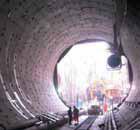
To help you build high efficiency commercial air conditioning systems.

Copeland ScrollTM compressors deliver greater energy efficiency and lower life cycle costs in commercial chillers.



Emerson’s line of Copeland ScrollTM R410 compressors allows engineers to design commercial HVAC systems that modulate capacity to closely match a building’s load while minimizing cost. As a result, chiller systems up to 1,000kW using multiple scroll compressors deliver up to 15% higher energy efficiency and up to 10% lower applied cost than similar systems designed with screw compressors. Copeland ScrollTM compressors, with over 25 years of proven reliability, continue to set the industry standard. For more information, visit www.EmersonClimateAsia.com
Emerson Electric (Malaysia) Sdn. Bhd.
Level M2, Blk A, Menara PKNS-PJ
Jalan Yong Shook Lin
Petaling Jaya, Selangor, Malaysia 46050
Tel: (603) 7949 9222 / Fax: (603) 7949 9333
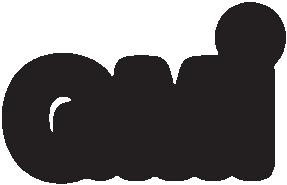

• Cardinal Buoy
• Cautionary Buoy
• Anchorage Buoy
• Mooring Buoy
• Control Buoy
• Hazard Buoy
• Information Buoy
• Swimming Buoy
• Diving Buoy
• Keep Out Buoy
• Scientiic Buoys (O.D.A.S.)
• Fairway Buoy
• Isolated Danger Buoy



However, there is still plenty of room for improvement for increasing the eficiency of the system. Existing monitoring and observation systems are passive systems, whereby periodic data collections are required for further processing and interpretations. For time-sensitive data, daily or weekly data collections have become standard operating procedures. Such a passive monitoring and observation approach can be replaced by the active method.
Recently, an active monitoring and observations system was implemented for early tsunami warning and underwater seismic monitoring observations. The enabling technology is satellite communications/remote sensing. Up to date, remote sensing is not a cost effective solution for coastal area monitoring and observations (less than 10 nautical miles from the shores). Passive observations system is exposed to several conceptual and technical disadvantages.
According to the Oxford Dictionary, buoy is deined as navigation aids with loating object, fastened to the bottom of the sea or a river, that indicates reefs or other hazards, or for mooring [1]. Usually, they indicate shoals, obstruction, dangers and mark channels. Each types of buoy have their own speciications, with different sizes, colour, shape, top mark, number and light colour/ characteristics.
A special IALA mark is used to indicate special areas which include:
1. Ocean Data Acquisition System (ODAS) Buoys
2. Trafic separation marks
3. Spoil ground marks
4. Military exercise zone marks
5. Cable or pipeline marks
6. Recreation zone
An existing ocean or coastal observation/monitoring system features a stationary single or multiple measurement points with built-in data logger. Multiple data obtained (conductivity, tide/depth, temperature variation, dissolve oxygen, acoustic noise, etc.) is stored inside the data logger. Measurements of surface parameters require sensors that are mounted on an anchored buoy while the measurements of the bottom parameters require anchor-mounted sensing modules. The latterstillrequiresabuoyasamarkeroratleastananchored point whose coordinate is locked. The contributions of all these observations and measurement method have been proved for several decades by providing us with signiicant amount of oceanographic data.
In this article, we will focus on design and development of scientiic buoys, also known as Ocean Data Acquisition System (ODAS) Buoys. Generally, ODAS buoys are smaller in size and are bright orange or yellow in colour with vertical stripes on moored buoys and horizontal bands on freeloating buoys. They are also equipped with strobe lights for night visibility. Figure 1 shows some examples of existing ODAS buoy.
There are many factors to consider when designing an ODAS buoy, to ensure it serves the intended purpose for the intended duration of time.
The irst step when designing an ODAS buoy, is to decide on the types of parameters to be collect and how they will be collected. Common parameters collected from an ODAS buoy are sea surface temperature, air temperature and humidity, barometric pressure, wave height and direction, wave period and tide, current speed and direction, wind speed, wind direction and gust, and salinity. Some buoys have visual, audio observation equipment and several specialised sensors. For example, the Coral Reef Monitoring manual for the Caribbean and Western Atlantic [8] included temperature, dissolved oxygen, salinity, pH, light transmission, sedimentation, nutrients and current speed and direction in the list of parameters that may affect








the growth and survival of reef organisms, and therefore should be monitored. Figure 2 shows placements of various sensors on CBIBS buoy and oceanographic buoy by Sirio d.o.o. Koper respectively.
The next consideration in designing an ODAS buoy will be the type of telemetry used. The choice of telemetry will depend on whether the data needs to be communicated in real time, the bandwidth requirement, the distance between the buoy and the ground station, and the operating cost. Communication through electrical or optical cable can be reliable and unlimited in terms of the bandwidth, which is ideal for real time data communication. However,
installation of undersea cabling can be very expensive and requires various environmental and other considerations. Satellite communication is among the most popular choice of telemetry for weather or ODAS buoys owing to the widest coverage. The downside however, is the limited and high cost of bandwidth. Table 1 compares data size and cost for different satellite telemetries.
In an area which receives cellular network coverage, cellular communication may well be an option. The bandwidth and cost may vary, depending on the data plan and service provider. Another good telemetry option for coastal buoy is RF communication, which is free of charge and can provide a bandwidth higher than that provided by satellite communication.
Power requirement for the buoy depends largely on the number and types of sensors used, sampling frequency, type of telemetry and frequency of communications. There are several options for generating power on a buoy system, the most popular of which are batteries, solar panels, diesel generators, wind turbine, and wave-activated generators (WAG). In regions that receive a large amount of sunlight, such the tropical region, solar panels provide access to free energy. However, buoys in other regions which don’t have the luxury of sunlight, may opt for diesel generators or other sources of renewable energy such as wave-activated generators (WAG). Figure 4 shows an example of a WAG and the working principal. Some low-power buoys can even operate on batteries for several years.
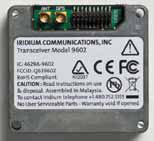

All the telemetry, sensors, controller unit, and power generation equipment constitute the payload of the buoy that must be taken into consideration when designing its mechanical structure. The mechanical structure should include the mountings for the telemetry unit, sensors and power generation equipment such as solar panels as well as safe compartments for the controller boards and batteries. Another aspect of the mechanical design of the buoy is the mooring, i.e. how it will be ixed to the seabed. There are
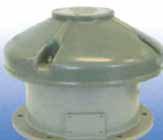
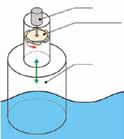
several types of moorings which, according to American National Weather Service, depend on the hull type of the buoy, the location and the water depth. Figure 5 illustrates four types of mooring for buoy by the American National Weather Service.
A moorinsg system consists of a mooring line, anchor and connectors. The mooring line can be made of synthetic ibre rope, wire and chain or a combination of the three. An anchor attaches the mooring line to the seabed and can be of several types, namely a mushroom anchor, deadweight anchor, or screw-type anchor. The choice depends on the condition of the seabed. The overall mechanical structure design of the buoy should provide the buoyancy to hold the total weight of the structure, the payloads, and the weight of the mooring structure, while maintaining the required stability under various sea conditions.
Our Intelligent Buoy is a type of ODAS buoy that provides an intelligent observation of various oceanographic and meteorological parameters and which can integrate with other underwater, surface, and aerial platforms to form a larger and comprehensive integrated ocean observation system. Its target deployment area is a coastal marine park.

It is called an Intelligent Buoy because, apart from collecting various scientiic data, it can relay data from other platforms to the ground station and, at the same time, act as a beacon to help with localisation of some other mobile platforms.
Listed in Table 2 are the various types of sensors installed on the Intelligent Buoy to measure oceanographic and meteorological parameters. In addition to some common sensors, the buoy is also equipped with a hydrophone, an underwater camera, and an omni-directional surface camera to capture audio and visual information from the marine environment. This hydrophone and camera can be conigured to automatically respond to certain trigger to initiate the recording and capturing. Time information provided by on-board GPS is used to update the system real-time clock, hence keeping it from drifting.
sensor Parameter
AnemometerWind speed and direction
Vapor Pressure,Temperature and Relative Humidity Sensor
CTD sensor
Depth and temperature transducer
Hydrophone
Air temperature, humidity and vapor pressure
Water salinity and sea surface temperature
Water depth
Underwater sound
Underwater cameraUnderwater image
Sea surface omni-directional camera
Inclinometer
Compass
Sea surface surveillance
Sea surface roughness
Used in combination with anemometer for wind direction
GPS Positioning and real-time clock update
Data acquired from the sensors are transferred to the
ground station through wireless communication in a timely manner which eliminates the need to personally collect data from the buoy except for large audio and visual data which cannot be supported by the communication bandwidth. In addition to sending data from the buoy to the ground station, the wireless communication will also be used to remotely conigure the buoy from the ground station. This is done with the use of a bidirectional radio frequency communication module, which is capable of reaching up to 3 kms of communication range using a high gain antenna mounted 2 metres above the sea surface. Furthermore, the communication system uses a mesh topology, which allows the message to hop from buoy to buoy in order to reach the ground station in the event that the distance between the buoy (originating the message) and the ground station is more than 3 kms.
All sensors, communication module and other equipment on the buoy are controlled by a main controller located on the controller module. The whole electronics of the buoy takes a modular design approach, which allows for easier future expansion of the system. In this approach the main controller module board consists of a low power controller which performs basic controls of storage, GPS and communication module, and provides generous I/O ports to control the power module and other sensor modules located on different boards as shown in Figure 6. Sensors that require heavy computation such as camera and sound recorder, will have their own controller which will be managed by the main controller. The main storage consists of an SD card located on the main controller board. SDHC card is selected for this system because of the high capacity and low price.
A lithium-ion battery with a suitable capacity is selected to power the whole system, and this battery will be recharged by solar panels to ensure continuous operation without the need to replace the battery. The capacity of the battery and solar panels are selected based on the power consumption of the system, estimating various sensors sampling rates and frequencies, and the duration and intensity of the sunlight throughout the year. The power for the buoy is managed by a power module which is responsible for converting the battery voltage to 3.3v, 5v, and 12v supply as required by the various instruments on the buoy.
The UCRG Intelligent Buoy is currently being inalised and will be tested in the near future for real ocean application. It willbeanexcellenttest-bedforfuturenear-shoreinspection, monitoring and marine mitigation activities. Certainly, further research is needed to study the performance of the buoy in various environmental conditions and other related issues. The design and development of the Intelligent Buoy was initiated by the UCRG team based in Universiti

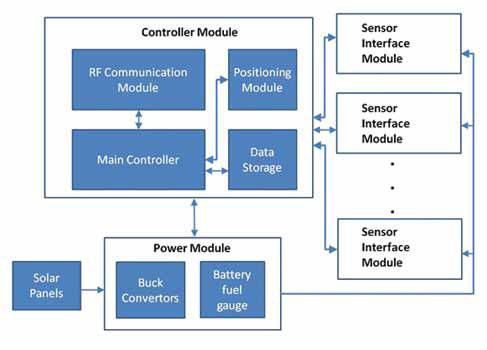
6: System design
Sains Malaysia (USM) in Nibong Tebal, Penang. We are also proactively looking for collaborative partners to expand our R&D works and potential ield trials. This work was funded by the Ministry of Science, Technology and Innovation (MOSTI), e-Science 305/PELECT/6013410 and Universiti Sains Malaysia.
[1] Miranda Steel (2009),” Buoy”, New Oxford Dictionary, 2nd Edition, p.108
[2] National Oceanography Centre; “ODAS” , Retrieved Jan, 15, 2014 from http://noc.ac.uk/news/ met-ofice-and-noc-enhance-ocean-observatory.
[3] National Ocean and Atmospheric Administration. “Integrated Ocean Observing System”. Retrieved Jan, 13, 2014 from: http://oceanservice.noaa.gov/facts/ioos.html.
[4] Melissa M. Iwamoto; University of Hawai, “New Paciic Islands Ocean Observing System wave buoy deployed in Maui”, Retrieved Jan, 13, 2014 from http://www.hawaii.edu/news/article. php?aId=4829
[5] Monterey Bay Aquarium Research Institute; “MOOS: Monterey Ocean Observing System, Retrieved Jan, 13, 2014 from: http://www.mbari.org/moos/mooring/mooring.htm
[6] NERACOOS; “Water Quality Monitoring”, Retrieved Jan, 13, 2014 from http://www.neracoos. org/highlight/lis_buoy
[7] ABC HaIbart;” Oceanographers expecting second buoy: “ ,Retrieved Jan, 13, 2014 from : http:// www.abc.net.au/news/stories/2011/06/09/3239691.htm?site=hobart
[8] National Park Service; “Coral Reef Monitoring manual for the Caribbean and Western Atlantic”, Retrieved July, 17, 2013 from http://l.biology.usgs.gov/Monitoring_Manual.pdf
[9] Michael Prior-Jones, “Satellite communications systems buyers’guide”, Retrieved Jan, 21, 2014 from http://www.scor-int.org/Working_Groups/satellite-systems-buyers.pdf
[10] Links: http://urrg.eng.usm.my/
Assoc. prof. dr Mohd. Rizal Arshad graduated from University of Liverpool, in 1994 with a B.Eng. in Medical Electronics and Instrumentation. He then pursued his MSc. in Electronic Control Engineering at the University of Salford, graduating in Dec. 1995. Following from this, in early 1999, he completed his PhD. degree in Electrical Engineering, with specialization in robotic vision system. He is currently an Associate Professor and the deputy dean of the School of Electrical and Electronic Engineering, Universiti Sains Malaysia and with his team of researcher, is also the pioneer of underwater system technology research efforts in Malaysia, known as URRG. He is very interested in investigating the fusion of the natural world with the modern engineering pool of knowledge. This is the reason his group has embarked on the bio-inspired research efforts and the utilization of nature to complement the current robotics system.
Abdul sattar din obtained his preliminary and secondary educations in Bukit Mertajam, Penang. He obtained his irst degree in Mechatronics from International Islamic University Malaysia in 2006. After graduation, he enrolled in an Industrial Skill Enhancement Program (INSEP) in microelectronic fabrication for one year, which was a collaboration program between Silterra Malaysia Sdn. Bhd., PSDC, and UNIMAP. From 2007 until 2010, he worked as a lithography process engineer in Silterra Malaysia Sdn. Bhd. He obtained his Master degree in Universiti Putra Malaysia in Smart Technology and Robotics under RLKA Fellowship program from USM.
herdawatie Abdul kadir received the Bachelor’s degree in Electrical and Electronic Engineering from Universiti Teknologi Malaysia in 2001 and Master’s degree in Mechatronic and Automatic Control in 2005. She is currently working toward the Ph.d degree in Computational Intelligence at URRG, School of Electrical and Electronic Engineering, Universiti Sains Malaysia. Her current research interests are Automatic control, Localization, Mapping and Cooperative System.
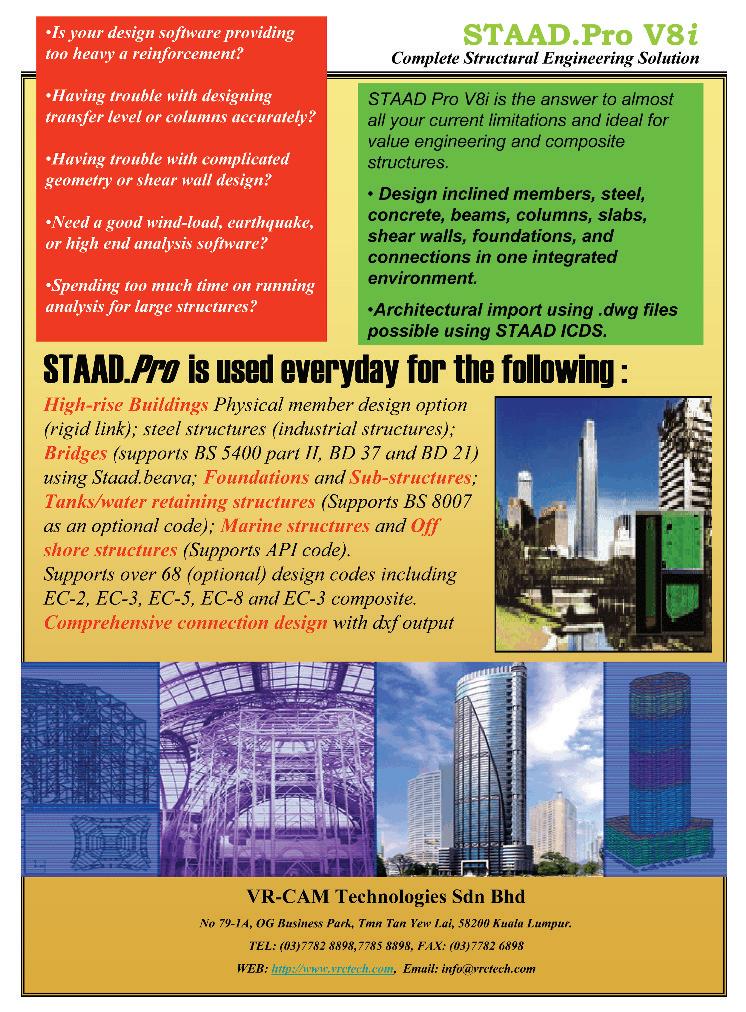


THE tremendous growth of shipping activities in Malaysia over the years and its great potential underlines the value of the maritime sector to economic well-being and the importance of the seas to the lives of the people. With our present standing as a top merchant shipping industry, it is only natural to aspire to be a shipbuilding nation. We aim to achieve long-term industrial competitiveness on a global basis through the transformation and innovation of our ship building sector. Shipbuilding is seen as a majorplayertoensureeconomicgrowthasitencompassesawide array of skills, services, SMEs and professional undertakings.
ButMalaysiaislaggingbehindinherabilitytocaptureasizable portion of the world shipbuilding pie. There are adequate skills to build various types of ships but skills alone are not enough to compete with shipbuilding giants that do not rely on skill alone but on massive designs and knowledge. Numerous issues contribute to this situation but the one of the most critical would be design capability.
Malaysian shipbuilders have relied heavily on foreign technical know-how and design. Due to its failure to develop indigenous design and development capabilities, the local market continues to be looded with foreign components and design know-how. This has adversely inluenced the development of local support industries which can be translated to less than marginal export performance.
competitiveness, which has come under increasing competitive pressure from Singapore, Vietnam, Indonesia, India, China and the Philippines.
The shipbuilding industry in Malaysia will not evolve by itself. For it to grow and be competitive, a comprehensive developmentplanwasformulatedandimplemented.Thefactors considered to be of great inluence are Policy, Institutional Framework, Regulatory Framework, Design and Technology, Human Capital, Finance and Incentives.
Modern shipbuilding involves multiple actors to design, construct and maintain a ship. Figure 1 illustrates the complex set of design, production, and post-production activities involving multiple actors across the shipbuilding value chain which comprises three major phases: Pre-production, production and post-production. Currently, the strength of the Malaysian shipbuilding industry lies in production but it is severely handicapped in the pre and post production.
dEsign And ship dEsign
The standard of Design in a society relects its intellectual, technological and organisational capabilities. Design is always associated with a creative act with developed ingenuity encompassing advanced knowledge, techniques and discipline which becomes the nerve centre for future innovations and discoveries.
Design is done in response to a challenge, a problem or a set of requirements, or as a planned action for the foreseeable future. The capability to design is a strategic act of consolidating perceived needs and the ability to act on it will create tremendous opportunities that will inally be translated into economic gain as well as a commanding status of a fully developed nation.
Design-led innovation has the potential to increase performanceandtheabilitytocompeteonaglobalstage.Design is a strategic business capability that enables communities to grow locally and globally. The sophisticated application of design and the realisation that it is a valuable business tool will enable businesses to create new and more eficient ways to do things, increase exports and improve productivity. Figure 2 summarises the phases and activities of modern shipbuilding.
MAlAYsiAn shipbUilding scEnARio
The Malaysian Shipbuilding and Ship Repair Industry Strategic Plan 2020 aims to generate RM6.4 billion in GNI and to create an additional 55,500 jobs by 2020. This is in line with the growing demand for small to medium-sized vessels to meet the needs of the maritime and Oil & Gas industry for the next 10 years. Its recommendations are expected to boost the country’s industrial
TEchnologicAl dEVElopMEnT And EconoMic gRoWTh
Value-oriented beneits of product innovation are not the only reason to promote design activity which has far reaching inluences on export and economic growth. International trade has long since shifted from raw materials to processed products. It is the design and the technological capability that give a competitive edge to the products in international market.
sHip dEsigN
pROjECT maNagEmENT
plaTfORm sysTEms missiON sysTEms
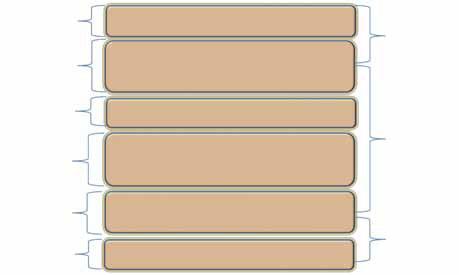
Design Phases
(Preliminary, Contract, Basic and Detailed)
• Project Management
• IRB Management
• Materials Planning & Procurement
• Production Planning and Engineering
• Hull
• Outitting and Furnishings
• Propulsion Plant
• Electric Plant
• Auxilliary System
• Integrated Platfrom Management System (IPMS)
• Command and Surveillance
• Armament (If relevant)
• Outit and Furnishings
• Repair and Maintenance
• Training and Customer Support
Design is recognised as a tool for development, especially in export trade, by the governments in industrialised countries as early as the irst decade of this century. Most governments believe in and continue to promote design capability with greater vigour.
With the full realisation of the strategic requirement for enhancing the full design capability of the Malaysian shipbuilding industry, the Shipbuilding and Ship Repair Industry Strategic Plan 2020 (SBSR 2020) was launched in 2011. Helming this initiative is the Malaysian IndustryGovernment for High Technology (MIGHT), with the Association of Marine Industries of Malaysia (AMIM). With this initiative comes the Entry Point Project (EPP) that speciically addresses SBSR 2020 with the aim of developing sustainable competitiveness in the industry.
Under this EPP project is the building of the First Malaysian-designed OSV and the stewardship of this milestone event has been given to Boustead Heavy Industries Corporation (BHIC). With its long involvement in national shipbuilding and ship repair, coupled with prime facilities and highly competent human resources, BHIC will be seen to champion the growth of the SBSR industry. With a basic hull developed earlier, a new design will be produced that will undergo extensive remodelling and review to undertake new requirements to fulil current stringent international regulations as well as meet the expectations of local ship owners. The new design will be then utilised by BHIC to develop more design innovations in its path to harness the competitive advantage gained by the ability to design.
In order to execute the design of the vessel, BHIC has engaged a local research centre to undertake the enormous task of developing the design and conducting extensive design veriications and testing. Marine Technology Centre of Universiti Teknologi Malaysia (MTC-UTM) with its wellequipped design and testing facilities, has the ability to


perform design, evaluation and model testing for the speciic needs of the maritime industry.
MTC-UTM which started as a marine hydrodynamics laboratory in 1997 to fulil academic requirements, has transformed into a major research and consultancy centre. Over 100 model testings have been conducted in the past 15 years for international clients. With this vibrant activity, its laboratory was upgraded to a Marine Technology Centre (MTC) in 2012 with a strong focus on developing knowledge in marine technology through research and the development of the national marine industry.
Under the EPP project spearheaded by BHIC, MTCUTM undertakes to provide design and model testing know-how. The design of the OSV, in particular the Anchor Handling Tug Supply (AHTS), is seen as the most strategic option in view of the number of local operators of the AHT in the Malaysian Oil & Gas industry.
The AHTS was designed using the latest technology in computational luid dynamics (CFD) and advanced model testing. The method allows the ship’s hull to be optimised prior to the model testing and is able to predict the inluence of various hull geometry and environmental conditions on the inal hull resistance. The hull designed at MTC-UTM demonstrates a reduction of 18% drag, which ultimately reduces engine size with savings in the inal fuel costs.



MTC-UTM will conduct extensive resistance, propulsion and sea keeping testing in calm and turbulent waters. This knowledge and know-how is particularly important as the world governing body, the International Maritime Organisation (IMO), under the Environmental Protection Committee (EPC) have mandated the requirements of fulilling the Energy Eficient Design Index (EEDI) starting January 2013.
As the shipbuilding industry is crucial in facilitating the growth of trade and economic development in Malaysia, it is essential that efforts be made to bolster the capacity and performance of the sector by way of learning from the successful experience of leading shipbuilding nations. All the stakeholders, including policymakers, inanciers, manufacturers, service providers, ship owners and shippers must close ranks to support local shipyards and spur the development of the industry.
For shipbuilding to prosper and to beneit other associations and downstream industries, the design capability must be nurtured, developed and protected. Designcapabilitydevelopsovertime.Itisthemostexpensive commodity to acquire and maintain but is deinitely the most valuable asset in the shipbuilding value chain. It is the designers’ prowess, not only in ship design but also in the general engineering sector which will ultimately develop the components.
BHIC and MTC-UTM are committed to overseeing the development of the SBSR industry. BHIC with its capital involvement in shipbuilding and ship repair will garner every effort to ensure sustainability in the shipbuilding sector as well as maximise its return on investments.
BHIC will continue to acquire opportunities to further develop the industry. MTC-UTM on the other hand will

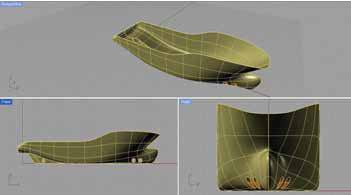
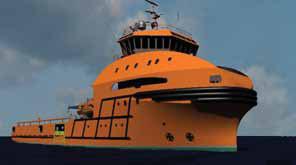
press on to acquire knowledge that would spur greater innovations through industry driven research.
ir. Ahmad fuaad Ahmad sabki is a senior lecturer at the faculty of mechanical engineering specializing in Naval Architecture and Ocean Engineering. Graduated from PUO in 1983 and started his carrier as marine engineer with Malaysian International Shipping Corporation (MISC). He pursued his studies and graduated from University of Newcastle Upon Tyne, UK with a B.Sc (Hons) in Marine Engineering and subsequently obtained his Masters of Science from the same university. His main area of expertise is in ship design, propeller design, propulsion systems and model testing. Currently attached to Marine Technology Centre (MTC UTM) as head of contract research and consultancy. He is also a professional engineer registered with the board of engineers of Malaysia.
Rear Admiral dato’ pahlawan ir. hj. Jasan Ahpandi bin sulaiman (R) is currently the Head of Commercial Division at the Boustead Heavy Industries (BHIC). He has served in the Royal Malaysian Navy for 35 years.

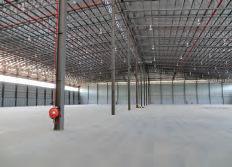

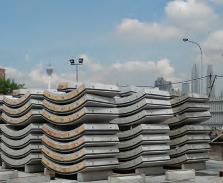

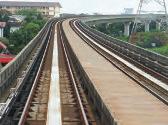
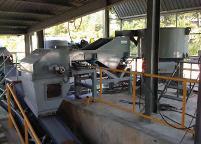


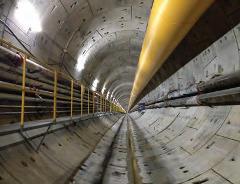






Ate adela ofse e ea s,theRM illio
Pe a g “e t al p oje t i Bute o th is set to take of a d Pe a g eside ts a d isito s a look fo a d to a state-of-thea t t a spo taio hu i a out th ee ea s, the e a e o fu the hit hes.
The p oje t’s de elope , Pe a g “e t al “d Bhd, has epo tedl su ited pla s to the lo al autho iies fo pe issio to p o eed ith the p oje t, hi h ill gi e the people of Pe a g a d the o the states a t a spo taio hu that ill oost the tou is , logisi s a d t a spo taio se to s.
Pe a g “e t al “d Bhd – a : joi t e tu e et ee Mala sia Resou es Co po aio Bhd a d Pela u a Ha ta ah Bhd – is e pe ted to ofe seg e ted a eas fo uses a d ta is, ade uate etail spa es ith es alato s a d ele ato s, a d o e ed a d ai - o diio ed alk a s to the Ke etapi Ta ah Mela u t ai staio a d the “ulta A dul Hali fe te i al.
(Sourced from NST, 12 May 2014)
The Media E e t RU “u ess “to ies p og a e o ga ised U i e sii Put a Mala sia UPM e e tl at its a pus i “e da g highlighted a of the i e io s a d e h a ks set the lo al esea h u i e siies RU .
The p og a e also highlighted the tale ts ehi d i po ta t esea h a d de elop e t u de take the RUs.
The e e t a o g othe s highlighted the p otot pe of a o ile east s a e , the a iious “e da g io ass to p oje t a d the a editaio s ste to e h a k tou ists spots i the ou t .
All these a e esea hed a d de eloped illia t Mala sia i ds ith the RU se i g as the e a le i pui g fo th thei tale ts a d a iliies i d i i g the ou t ’s k-E o o a d a hie i g the de eloped status . The i e u i e siies e og ised as RU i t o phases, a el i a d , a e UPM, U i e sii Mala a UM , U i e sii Ke a gsaa Mala sia UKM , U i e sii “ai s Mala sia U“M a d U i e sii Tek ologi Mala sia.
Apa t f o a i g out esea h i depe de tl o th ough olla o aio ith lo alo fo eig pa ies,all theRUsalso olla o ate ith o e a othe i o du i g esea h th ough a luste s ste .
The a e also e t usted ith the espo si ilit of esta lishi g olla o aio ith the p i ate se to i o e ialisi g the esea h out o es to ge e ate i o e.
(Sourced from BERNAMA, 10 May 2014)
“pot he ks at o st u io sites ill e i te siied to edu e the u e of deaths a d i ju ies, said Wo ks Mi iste Datuk Fadillah Yusof. He said the i ist ould o k ith lo al ou ils, the I ig aio Depa t e t, the Depa t e t of O upaio al “afet a d Health a d the Health Mi ist to o du t i teg ated he ks o o ksites aio ide, egi i g ith Go e e t-li ked p oje ts.
Ou goal is to edu e the u e of a ide ts, deaths a d i ju ies as ell da age to p ope t . We a e ot doi g this tope alisea o e uttoi ul atea ultu e a o g those i the o st u io i dust that safet a d health aspe ts eed to e adhe ed to, he told epo te s ate isii g the U iKL-Mala sia I situte of A iaio Te h olog o st u io site i “u a g Ja a este da .
Hesaidatea ofe pe tstaskedtoi p o e i dust p a i es had ited a eless ess i its epo t as a o g the easo s h o st u io a ide ts o u ed i the ou t .
Ca eless ess is dei itel a fa to . We a e looki g at hethe guideli es a e p ope l follo ed, a d if the e is a la k of e fo e e t o u de sta di g of ules. E e o e eeds to pla his pa t to edu e the isk of a ide ts, i ludi g p ofessio al odies hi h a t as ad ise s to p oje t o e s, de elope s, lo al ou ils, o t a to s, health, safet a d o st u io pe so el, he said.
Fadillahsaid a ide ts e e epo tedat o st u io siteslast ea hi h esultedi fataliies. o ke s lost thei a ilit to o k a d sufe ed i ju ies.
(Sourced from The Star, 9 May 2014)
Bi tulu Po t Holdi gs Bhd BPHB ill i est RM il o e th ee ea s to e pa d the po t’s o tai e a d a go ha dli g apa it , as ell as suppo t fa iliies fo oil a d gas O&G o pa ies. The o e ill helpthepo tope ato to edu eits elia e o o e li ueied atu al gas usi ess.
Chief e e ui e oi e Datuk Mio Ah ad Baii Mio Lu Ah ad said the apital e pe ditu e up to ould i lude the o e sio of a ge e al a go ha f fo o tai e ope aio a d uildi g of a e ge e al a go ha f at the se o d i e ha ou .
The t o p oje ts a e esi ated to ost RM il. The e ha f ould ha e fa iliies like a ehouses, a ope a d fo pape p odu ts, logs a d othe ge e al a go.
Othe e p oje ts i the pipeli e e e the de elop e tofa ulkfe ilise ha f, also at the se o d i e ha ou a d a s all a ge e th at the po t’s edi le oil te i al.
(Sourced from The Star, 10 May 2014)
Go e e t uildi gs should ha e a ai ate ha esi g s ste to help o se etheuseofpiped ate ,saidE e g , G ee Te h olog a d Wate Mi ist se eta -ge e al Datuk Loo Took Gee.
“he p oposed that the Pu li Wo ks Depa t e t i teg ate ai ate ha esi g te h olog i to futu e desig s of go e e t uildi gs.
E isi g uildi gs should also e efu ished to i lude the s ste , she said. This ould set a good e a ple a d e ou age o e Mala sia s to ha est ai ate at thei ho es.
Reside ts i Petali g Ja a e e hit ith ate aio i g et ee Fe ua a d the e d of Ap il ate the “u gai “ela go da le el d opped to ii al.
Whilethe aio i ge dedo Ma ,e pe ts ha e a ed of o e ate uts due to eathe o diio s u il the o pleio of the La gat ate suppl p oje t i .
(Sourced from The Star, 7 May 2014)

iN September 2013, the IEM Marine Engineering and Naval Architecture Technical Division (MNATD) organised a one-day course on “Health, Safety and Environment (HSE) In The Industry”. The objective was to increase awareness on the importance of HSE in the engineering sector of the marine industry.
The course was presented by Prof. Ir. Dr Ab. Saman Abd. Kader, the Director of Marine Technology Centre of Universiti Teknologi Malaysia (UTM) and was chaired by Dato’Ir. Hj. JasanAhpandi, the deputy chairman of MNATD.
Prof. Saman started the course by discussing the HSE Law in Malaysia, mainly the Occupational Safety and Health Act (OSHA) 1994. He also explained the role of Department of Safety and Health (DOSH) in regulating the HSE laws.
He then covered HSE issues in plants, machinery and equipment. To make this topic interesting, Prof. Saman gave numerous examples from his past experiences as a marine engineer on board of the Malaysian International Shipping Corporation. He discussed the HSE issues that he had to face while operating, repairing and maintaining the power plant system of the vessels.
Prof. Saman then talked about the importance of HSE Management System in an organisation. He emphasised the importance of the manager’s role in managing the HSE policy, operation and training to ensure the successful implementation of HSE procedure. To ensure that the HSE Management System is effective, the HSE team should audit its system regularly and appropriate measures should be taken to improve any procedure that is not used effectively.
For example, a recent audit may ind that the workers are not wearing the required personal protective equipment (PPE) regularly when working. To solve this problem, the management should carry out regular training programmes and put up awareness posters to make the workers more aware about the importance of using PPE.
Review leadership and Commitment
policy and strategic Objectives Organisation, Resources and Competence Risk Evaluation and management planning, standards and procedures
Corrective actions
The session ended with discussions on how to carry out HSE risk assessment and how these risks can be managed. Prof. Saman stressed that the irst thing one should do is to eliminate or reduce the risks. Eliminating the risks will ensure no accident will happen in the irst place. Effective communication is also important to ensure workers are aware of the potential hazards surrounding them. Personal protective equipment (PPE) should only be used as the inal option.
The participants found the course was interesting as Prof. Saman’s experiences as a marine engineer and his current role as the Director of UTM Marine Technology Centre, gave him a unique blend of examples in explaining the HSE issues. It was hoped that this course could be repeated again in the future.
Engr. shazlan Rahman is a corporate member with the Institution of Civil Engineers UK (MICE) and a chartered engineer with the Engineering Council UK (CEng). He has experience in the structural design and integrity management of offshore structures. He is a committee member of the IEM Marine and Naval Architecture Technical Division.
SALIM 214363ABD. RANI BIN HAJI MOHD. PAUZI 304548ABDULHAMID BIN SIRIM 404818ABDULLATIF BIN MOHD SOM 503314ACHUTHAN KUTTYG. KRISHNAN
621881AHMAD NAZRYBIN SARNI
722228AHMAD RAFIDI BIN MOHAYIDDIN 838873AINOLHUDABINABD MANAP
942000 AISHAHTURIZDAH BINTIASHGUL 1016410AZIZAN BINABD.AZIZ
11 17568CHAI SHOON LEONG
1210908CHANG CHOOI FOONG
1312279 CHEWAI BENG
1411946 CHEWYEE CHUAN
1513857CHIN CHOON SENG
1623414CH'NG HEAN KHIM
1720955CHOK CHING HUAT
1817679CHOYWENG WAH
1913527DATO' DR. IRABU BAKAR BIN JAAFAR
2000358DATO' PARKER, MICHAELDONALD PETER
2112809DR MOHD SABRI BINABDULLAH 2218262FAISALBINABDULHALIM
2319592FATHULLAH RAZZAQ BIN GHAZALI 2415607FOO SAIK CHENG
2504871 HEW WAITHO
2607447HJ.AHMAD BIN ISMAIL
2725187HUSSIN BIN MAMAT
2810013 JAMALUDIN BINTAKEI
2915850JAWHARDEEN BIN HAJIABDUL KADER
3014838KAMARUZZAMAN BIN MUHAMMAD
3123415 KAMSANI BINAHMAD
3216894KAPT.(B) HAJIANUAR BINYAHYA
3315881KUMARI NALINIA/PP. SUBRAMANIAM
3407480
4713027MO CHEE LIM 48 11511 MOHAMADAZMI BINABDULLAH @ MAMAT
4931733MOHDAZMI BIN JUSOH
5006016MOHD ELIAS BIN BURAN
5142013MOHD REDZUAN BIN ISMAIL
5224170MOHD SALLEH BIN NGAH MAT DRUS
5306789MOHD. FAZLI BIN OSMAN
5410764MOHD. HASHIM BIN SHAARI
5520285MOHD. RIADHI BIN HASHIM
5620117 MOHD.YUSOF BINAHMAD
5729281MUHAMMAD FAKHRUDDIN BINALI
5805387MUHAMMAD RAZIF BIN HAJI IBRAHIM
5924360MUKHTAR BIN CHEALI
6007000NGU MENG HO
6117436NIZAMUDEEN BIN MANSOOR
6217049NOORAZAM BIN MD SAAD
6325614NUR SHAZWANI BINTI MUHAMMAD
6457548NURULAZWANI BINTI MAHBOB
6502128ONG LAM SENG
6619210 ONGTHIAM LING
6706954 PHANGAH LEK
6821574RAZALI BIN SALLEH
6938325ROSEMAN BIN MATJIDIN @ JIDIN
7005709SDR. NIKAB RAHIM BIN NIK ISMAIL
7109881SDR. WONG HOCK CHUAN
7224715SDR.YEN FAI MIN
7361400SDRI. UMMI SARAH BT. ROHAN
7413400SEETJEN PING
7512910SHAHARUDDIN BIN HARIS LIM
7643205SHAHIRRULHAQIM BIN MAILAH
7722489 SHAMSUHAIME BINAHMAD
7807030SIM KETHUI, PATRICK
7907366TAI KIM FUI
8012617TAN CHOR SUAN
8101798TAN HOON KAI
8216600TAN KANG CHU
8302336 TAN KENGTONG
8407616TAN SEE JOON
8500703 TAYKENGYEOW
8603677TEHAH KAU @TEH HUAN CHEW
8711465TEO KIM CHOW
8821314TSAO KEE JANG
8920102WONG HENG LIP
9025758WONG KING HONG
9120525WONG KUEN MOU,TERENCE
9209625YAPWEI LEN
9308279 YAPYOON CHEONG
9405739YONG KI MIN
9554618ZAIDI BIN SHAHOR






THE Marine Engineering and Naval Architecture Technical Division (MNATD) organised a visit to Akademi Laut Malaysia (ALAM) on Monday, 21st Oct, 2013.
On arrival we were received by Captain P.C. Nadkar, Director ofAcademicAffairs and Advisory. He has been with ALAM since its inception in 1977. First, we were briefed on the history of ALAM and given an overview of the training academy.
















ALAM was initially known as the Maritime Training Centre (MTC). In January 1981, MTC was upgraded toAcademy status with the award of Government Charter by the then Prime Minister Tun Dr Mahathir Mohamed. In January 1997, ALAM was privatised by a consortium of MISC, Petronas, PSC (now known as BHIC) and Klang Port Management.
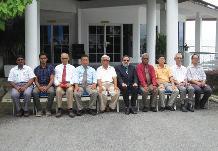

The main faculties in ALAM are Marine Engineering and Nautical. Other courses include Maritime and Offshore Safety Training, Standards of Training, Certiication and Watchkeeping (STCW) as well as Maritime Management.
The Marine Engineering Faculty trains future engineers for the real-life challenges. It provides the rigours of academic knowledge with the discipline of hands-on practical training. The faculty also conducts research in various ields, from Marine Engineering Technology to FPSOs.
We were also informed that ALAM is working to get its Engineering qualiication recognised by IEM and the Board of Engineers. In countries such as the United Kingdom, courses offered by its Maritime Academy are recognised by its Engineering Council.
We were then taken on a tour of the academy, in particular the Marine Engineering workshops, the hostel and the simulators.ALAM’s Maritime Simulation Centre consists of full mission ship handling simulator, full mission engine room simulator and liquid cargo operations simulator. These are installed with state-of-the-art software that provides high idelity hydrodynamic effects, hence providing a realistic marine environment.
The visit to ALAM was a fruitful event that enabled the participants to gain knowledge on how it conducts its training. Simulators, for instance, are not cheap but their use allows students to better appreciate the real life situation of handling ships at sea.





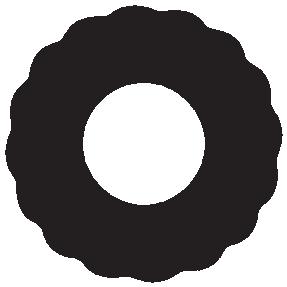
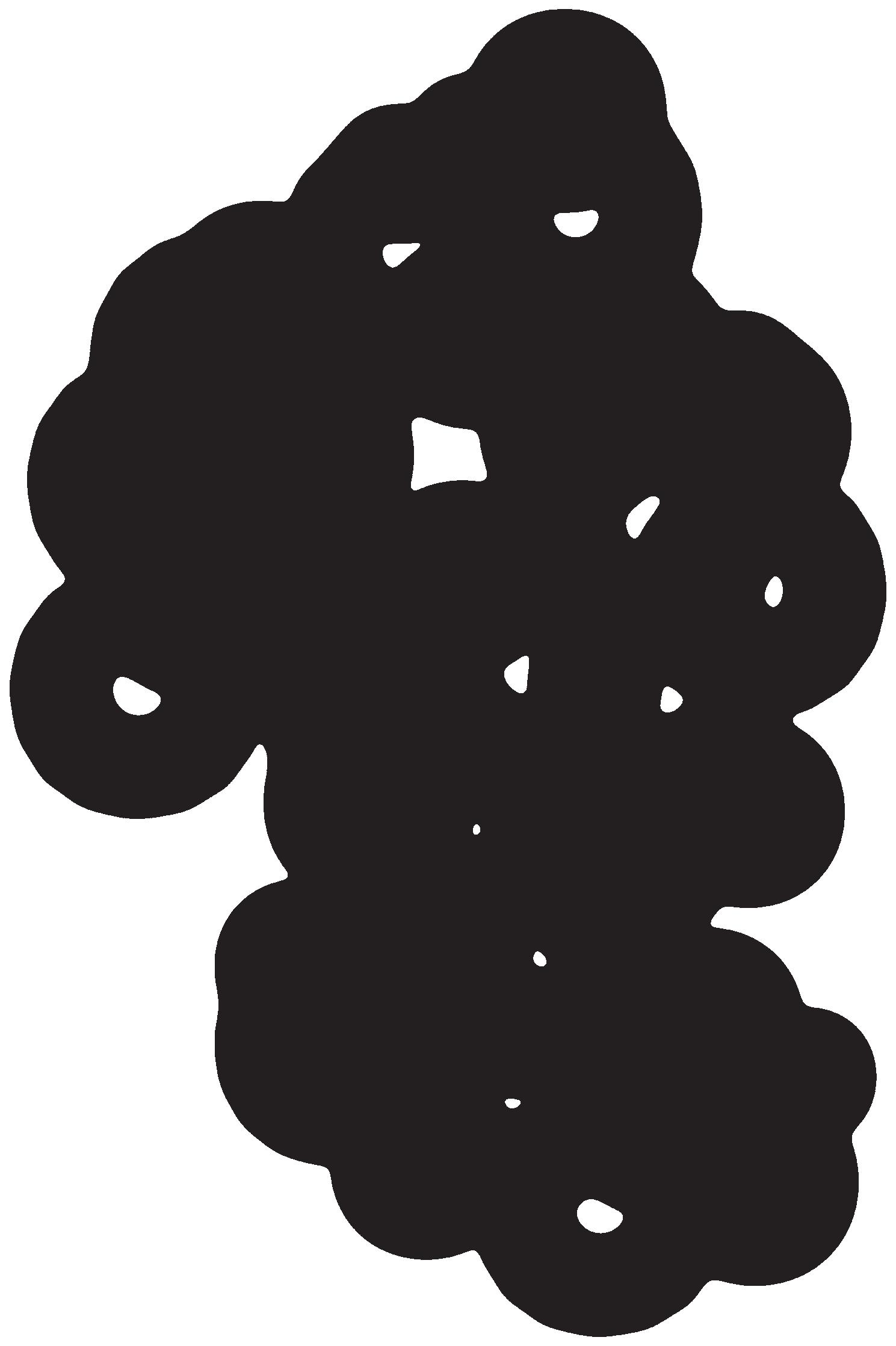
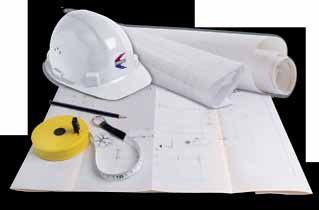



gEoTEchnicAl EnginEERing TEchnicAl diVision

iT was a great honour for the Geotechnical Engineering Technical Division of IEM, to have a team of internationally recognized dynamic pile testing experts – Mr. Garland Likins, Mr. Ryan Allin and Ir. Richard Yu – deliver a one-day course on “High Strain Dynamic Pile Testing and Analysis On Deep Foundation” at Tan Sri Prof. Chin Fung Kee Auditorium, Wisma IEM on 2nd September 2013. The short course, chaired by Ir. Mun Kwai Peng, was attended by 144 participants.
Thecoursestartedwithanintroductorybackgroundondynamicpile testing development and a comparison with other pile testing methods. All methods are closely linked, with deinition of failure criterion and also the validation process in line with the design philosophy. The use of impact wave travelling through the pile shaft by application of wave propagation theory to yield useful physical engineering behaviours of the installed pile was briely explained.
first module gives basics of wave mechanics on the following aspects:
a. Wave propagation

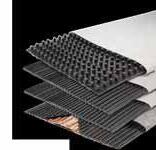
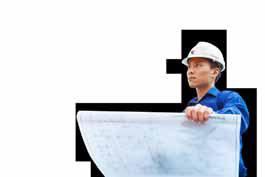
b. Wave equation and solution
Proportionality Law: Forces in a pile are a function of pile impedance and particle velocity
Wave speed (square root of ratio between Young modulus and density of pile)
Upward and downward travelling wave: Pile forces (stress and strain) are proportional to positive particle velocity in a downward travelling stress wave and also an upward travelling stress wave
Restraint effects of pile toe (ixed end and free end): Pile toe force can reach twice force at top
g. Effects to travelling wave with soil resistance
h. Case-Goble capacity
Casedampingfactor(Separationofdynamicandstaticresistances)
Impact stress (Momentum collision impact, Ram mass effect). A few salient points on impact stress can be summarised below:
i. Impact stress is a function of impact velocity.
ii. Tension stresses can be equal to compressive stresses in free and ixed end pile.
iii. Compressive stresses at pile toe can be twice those at impact.
iv. High ram mass causes higher top stress than at impact at wave return.
v. Stresses at a point along pile are the sum of the stresses in upward and downward wave.
k. Energy (Hammer performance assessment from transformation of potential energy to kinetic energy to derived rated energy of impact, and inally transferred energy onto pile).
second module provides the basic practice of dynamic pile testing with following issues highlighted:
a. Potential problems: Lack of knowledge, pressure on tester from piling contractor, poor understanding of end user to the test and interpretation.
b. Dynamic Measurement and Analysis Proiciency test (on data acquisition, data quality, data interpretation and data communication) are recommended to testers. Specifying agencies can set their own requirements on the rank and validity period of this proiciency test for the ield tester and ofice signatory for the test report.
c. Location of sensors: At least 2 pile diameter/width below pile head for uniform impact stress.
Third module onApplication of PDAand CAPWAP in pile design veriication: Provision of various pile tests including dynamic pile tests in enhancing design conidence and design safety factor under the various design codes was discussed. Application of dynamic pile test results on potential pile capacity relaxation with time was presented.
fourth module on PDAWorkshop: (i) Compression and tensile stresses measured at pile top and assessing the calculated at pile body and toe, (ii) Real time beta value indicating pile integrity, (iii) hammer performance and appropriate hammer energy for productivity, and (iv) Method of end of drive and retriked pile capacity assessment (RSP, RMX and RSU).
fifth module on models, procedures and parameter for CAPWAP. Measurements are done on impact load and the responded movements of pile, but the parameters on soil model system interacting with the tested pile are unknown. CAPWAP deploys iterative signal matching algorithm on damping resistance, resistance distribution and soil stiffness at both shaft and toe to reverse analyse the soil parameters with acceptably match quality. The CAPWAP output consists of total capacity, shaft and toe resistances, stiffness of soil at pile-soil interface, damping properties of soil, and static load-settlement curve emulating very quick static load test.
The short course ended at 5.00 p.m. with the presentation of mementoes and certiicates of appreciation to the speakers. A group photo was also taken.
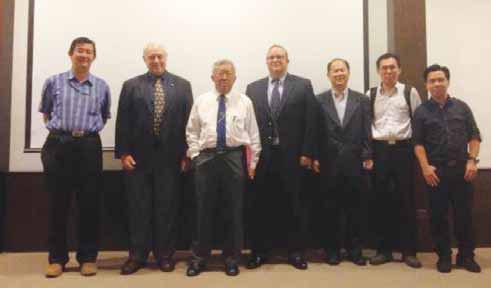
















EnginEERing EdUcATion TEchnicAl diVision

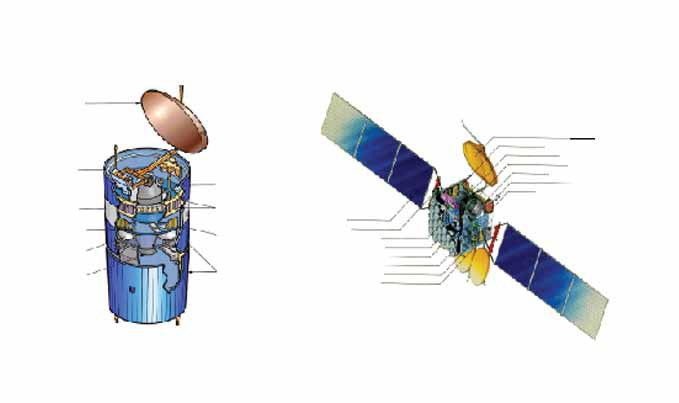
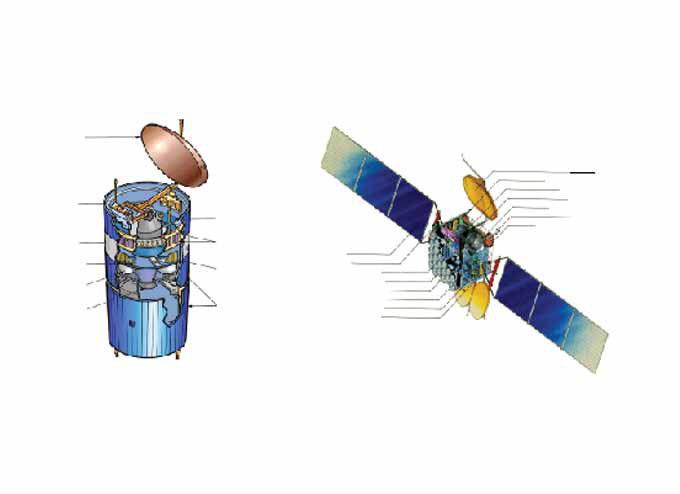
Environment, together with the EngineersAustralia Malaysia Chapter and the Institution of Mechanical Engineers Malaysia Branch, on 1st October 2013, at the Auditorium Tan Sri Prof. Chin Fung Kee, 3rd Floor, Wisma IEM. The talk was delivered by En. Azih M Zin, Senior Advisor at Measat.
There were 70 participants. The talk commenced at 5.30 p.m. with En. Azih showing pictures of the various types of modern communication satellites.
He then elaborated on the geosynchronous orbit, geosynchronous satellite, geostationary orbit, and geostationary satellite. He said that most commercial and communications satellites including Measat’s two (2) satellites operate in geostationary orbit which has an altitude of approximately 35,786 km directly above the Equator and that satellites here have a velocity of 3.00 km/s.
As the number of satellites in the geostationary orbit is very high, operators are allocated orbital slots to locate their respective satellites. This is to limit and manage the number of satellites in the geostationary orbit. Each orbital slot is able to stack (co-locate) up to a maximum of 8 satellites.
very large and very small, ranging from micrometeoroid showers to orbital debris. The velocity of these particles ranges from zero to the speed of light. Temperatures vary from being extremely high to being extremely cold. Charge particles continually bombard exposed surfaces. Magnetic ield can be intense and the environment in space is constantly changing. All these factors inluence the design and operation of space system.
He explained in length with regards the negative effects of surface charging, photoelectron current, difference of loating potential on dielectric surface material that causes arc-discharging, and deep dielectric or bulk charging (IESD) on spacecrafts. He said spacecraft charging is responsible for a number of operating anomalies such as telemetry glitches, logic upsets and component failures and spurious.
He continued with the space weather outlook for the years beyond. He said that designers will normally look at past events to forecast future occurrence. He then told the participants that the sun glows its brightest every 11 years.
The cycle whereby the sun is at its minimum to its maximum is known as a solar cycle (SC) and space scientists will benchmark these solar cycles for the future 15 years space lights.
En.Azihalsotalkedaboutprotoneventwhichrelatestoenergiesreleased by the sun and which ionises heavy iron. He said proton and ionised irons are hazardous to spacecraft and are primarily responsible for anomalies. As such, designers will design spacecrafts based on the solar maximum to mitigate the effect of these solar energetic particles.
He further mentioned the radiation effect caused by Galactic Cosmic Ray, Solar Flare, Solar Proton Event and Coronal Mass Ejection. Passive electronics such as cable, wiring, solar array and sensors can be seriously affected by radiation. As such, space components have to be radiation hardened (RAD HARD), with shielding and grounding in order to mitigate the above threats.
Next, En. Azih moved on to the threats caused by space debris. It was shown that space debris had increased by a thousand-fold since 1960. This debris was generated by spacecraft explosion, collision, etc and the size of the debris varies from less than 0.01cm to those greater than 10cm. Damage caused by space debris, even small ones, can be relatively signiicant, because of the extremely high orbital velocity which varies from 8 to 10 km/ sec.
To observe and track space debris, various ground-based radars or telescopes, detectors aboard satellites or orbiting equipment recovered on the ground (i.e. Hubble telescope panels) are available.
En. Azih then discussed mitigation methods carried out by operators to lessen damage to their spacecraft caused by space debris and the current regulations imposed on spacecrafts operators by international space regulators.
Active discussions followed with questions raised by the participants after the talk. En. Azih answered all the questions and the talk ended with the presentation of a memento to En. Azih and a round of applause from the participants.




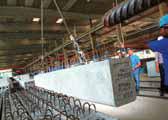


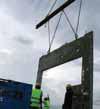


sales & marketing Office: 3rdFloor,WismaChineseChamber, 258JalanAmpang, 50450KualaLumpur
Tel :+60(3)42510216
Fax :+60(3)42510329
Website :www.precastpsb.com.my
Email :enquiries@precastpsb.com.my
chew
is a committee member of the Engineering Education Technical Division of IEM. He is currently the Deputy General Manager of Forefront Tiara Sdn. Bhd., a property development company.
factory: Lot6704,KawasanPerindustrian TuankuJaafarSenawang 71450SerembanNegeriSembilan,Malaysia
Tel :+60(6)6781037/0233
Fax :+60(6)6786257
Website :www.precastpsb.com.my
Email :enquiries@precastpsb.com.my
WHaT is innovation? What are the barriers and key factors to promote effective innovation? These were questions answered at a half-day workshop organised by Chemical Engineering Technical Division (CETD) on 7th Sept 2013. Assoc. Prof. Dr Edwin Chung from the School Of Engineering at Taylor’s University and Head for Taylor’s Technology Innovation Centre (TTIC) was invited to conduct the workshop.
Dr Chung started by requesting all participants to introduce themselves and to state their expectations for the workshop.It was noted that most of the participants wished to learn more about innovation, how to start to innovate, tools and techniques to generate ideas, what comes after innovation, how to apply innovation techniques to research and development as well as how to generate high impact innovation.

Ci ulaio a d Reade ship P oile
Our estee ed readership o sists of eriied e gi eers, de isio aki g orporate leaders, CEOs, go er e t oi ials, proje t dire tors, e trepre eurs, proje t o sulta ts, e gi eeri g o suli g ir s a d o pa ies i ol ed ith e gi eeri g produ ts a d ser i es.
JURUTERA is ir ulated to ore tha , egiste ed e e s of The I situio of E gi eers, Mala sia IEM , ith a esi ated eade ship of 120,000 professio als.
Ad e isi g Be eits
Our usi ess part ers a e assured that their produ ts a d ser i es ill e gi e the ir ulaio a d e posure it deser es, thus ai tai i g a sustai ed ad erisi g prese e to our ore readers of de isioaki g e gi eers a d te h i al e perts. Our e site ofers a e e ider arket rea h, ith added i ter aio al prese e, aided our i ter aio alailiaio ithoi iale gi eeri g odiesallo erthe orld.
Our o li e a d oli e ad erisi g features su h as a er ad erisi g, ari le spo sorship a d dire t e- ail a ou e e ts ha e pro e to e su essful arkei gstrategiesthat illsetthe usi essesofourpart ers apart fro their o peiio .

by
Next, participants were engaged in the second session with a simple paper game to illustrate how we limit our thinking with a self-imposed barrier. Participants were pusheduntiltheyhadnochoicebuttothinkpasstheartiicial barrier for a solution and they awakened to the realisation that it was they themselves who put a limit on their thinking.
Innovation is not only good for business but it also creates shareholder value. A report in Business Week in 2006, indicated that the top 25 most innovative companies at the time achieved a median proit margin growth of 3.4% a year since 1995 compared with 0.4% for the median S&P1200 company. Dr Chung also related the story behind Honda’s CVCC engine development to illustrate the beneits of innovation.

OutsideBakCoerOBC
IsideFrotCoerIFC



The taxonomy for innovation was introduced. Dr Chung said that when we talk about innovation, we normally think of innovation in the form of product and services but there is more to innovation that just product and services. He then introduced participants to the 10 types of innovation as deined by DOBLIN. This model is as depicted in Figure 2.

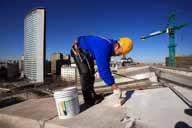
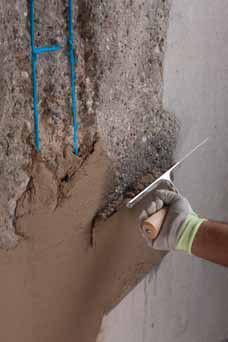
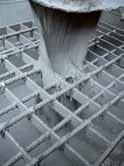

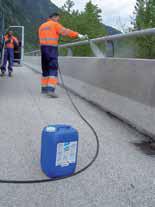


After this, he introduced a framework for innovation based on Design Thinking. Based on the simple process of Understand, Observe, Ideate and Prototype, Dr Chung irst illustrated this with a short video presentation and then followed up by going through some of the underlying techniques for each of these steps in turn.
In conclusion, it was emphasised that effort is extremely important, for nothing happens without effort. Finally, Dr Chung engaged the participants in a discussion about the source of innovation. He stressed that if we know where the source of creativity is and that innovation is within us, we will become more creative and innovative by constantly nurturing this source. He kept at it until most of the participants inally realised what he was talking about.
The workshop ended at 1.00 p.m.
dr chong chien hwa is the Associate Dean (Learning & Quality), School of Engineering, Taylor’s University. He is a Chartered Engineer and a member of Institution of Chemical Engineers (IChemE), UK.








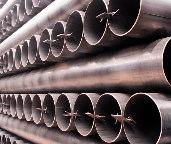



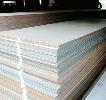



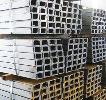

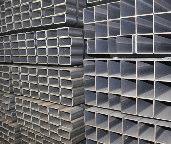
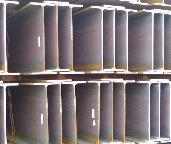
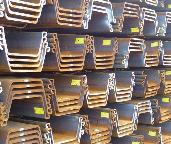

HUATRACO SCAFFOLD SDN BHD (240510-T)
Lot 6088, Jalan Haji Abdul Manan, Batu 5½, Jalan Meru, 41050 Klang, Selangor Darul Ehsan, Malaysia. Tel: +603-3377 8999 Fax: +603-3377 8988
BHD (267844-V)
Lot 6085, Jalan Haji Abdul Manan, Batu 5½, Jalan Meru, 41050 Klang, Selangor Darul Ehsan, Malaysia. Tel: +603-3377 8688 Fax: +603-3377 8788
THE Institution of Engineers, Malaysia (IEM) through its whollyowned subsidiary IEM Academy Sdn. Bhd. (IEMASB) and the Chartered Institute of Arbitrators (CIArb) Malaysia Branch signed a memorandum of understanding (MoU) on 6th February 2014. The MoU was signed by Ir. Choo Kok Beng, the then IEM President cum Chairman of IEMASB Board and Ar. David Cheah Ming Yew, CIArb Chairman.
This sets the platform for CIArb to provide education and training for IEM members and others interested in structured courses in Dispute Resolution Practice/Management (DRP/ DRM), to be carried out through IEM Academy Sdn Bhd.
In his welcome speech, Ir. Choo said the MoU was the result of a dialogue held between IEM and CIArb in October 2013. It was hoped that with the combined learned experiences of IEM and CIArb, the good practice of Disputes Resolution in Malaysia will be greatly enhanced and that the expertise of IEM members will be increased, thus improving their marketability overseas especially in the ASEAN region. IEM is the ASEAN Engineers
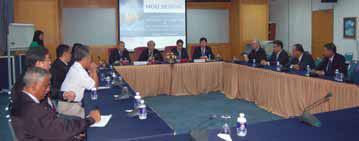


Secretariat and there are ample opportunities for CIArb to work with IEM in this region.
Welcoming the signing of the MoU, Ar. David Cheah Ming Yew said that IEM is the irst institution with which CIArb has signed the MoU. He expressed appreciation that IEM had invited CIArb to be part of this collaboration.
Moving forward from the MoU, a series of talks and courses will be held over the next few months, such as that on “The Role & Responsibilities of an Expert in Dispute Resolution”, “Good Preparation of Expert Report” and “Going To Court”. With the MoU, both IEM and CIArb hope to see the participation of all industry players and professionals.
Also present to witness the Signing Ceremony were several IEM Council Members, members of the Subcommittee on Dispute Resolution Practice (DRP) of IEM, Council members of CIArb as well as the Board and senior management of the IEMASB and the IEM secretariat.
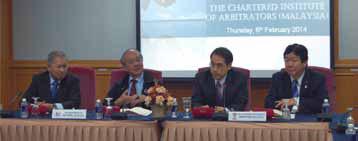
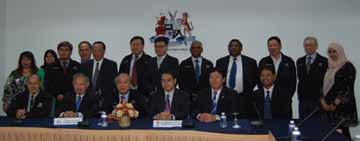
the Foundation
also an Advisor for Consulting Engineering Special Interest Group
Fellow of
Fellow of the Malaysian Institute
is Organizing Chairman of the International Tunnelling and Underground Space
promoted by the International
Association (ITA-AITES) to

DIMENsIoN pUblIshINg sDN. bhD. Theoi ialpu lishe of thE INstItUtIoN of ENgINEERs, MalaysIa IEM –isp oudtop ese tthe IEM DIREctoRy, hi h o piles ii al usi essdataf o usi esspa t e s,a dp o ides aio idee posu e to ke p ofessio als i the e gi ee i g i dust .
cIRcUlatIoN aND REaDERshIp pRofIlE
Ou estee ed eade ship o sists of e iied e gi ee s, de isio aki g o po ate leade s, CEOs, go e e t oi ials, p oje t di e to s, e t ep e eu s, p oje t o sulta ts, e gi ee i g o suli g i s a d o pa ies i ol ed ith e gi ee i g p odu ts a d se i es.
IEM DIRECTORY is i ulated to o e tha 30,000 registered members of The I situio of E gi ee s, Mala sia IEM , ith a esi ated eade shipof , p ofessio als.
aDVERtIsINg bENEfIts
Ou usi ess pa t e s a e assu ed that thei p odu ts a d se i es ill e gi e the i ulaio a d e posu e it dese es, thus ai tai i g a sustai ed ad e isi g p ese e to ou o e eade s of de isioaki g e gi ee s a d te h i al e pe ts. Ou e site ofe s a e e ide a ket ea h, ith added i te aio al p ese e, aided ou i te aio al ailiaio ith oi ial e gi ee i g odies all o e the o ld. Ou o li e a d oli e ad e isi g featu es su h as a e ad e isi g, a i le spo so ship a d di e t e- ail a ou e e ts ha e p o e to esu essful a kei gst ategiesthat illsetthe usi esses of ou pa t e s apa t f o thei o peiio .

EDItoRIal coNtENts
The IEM DIRECTORY is a e elle t esou e fo usi esses looki g fo e gi ee i g elated p odu ts a d se i es, usi ess oppo tu iies a d oope aio ith e gi ee i g i s, supplie s, dist i uto s, o sulta ts a d ualiied p ofessio al e gi ee s fo ajo p oje ts a d usi ess i te ests. Ou o te t i ludes:
• Mala sia’s ost o p ehe si edi e to ofe gi ee i g o pa ies a d o sulti g fi s.
• Detailed des iptio s of ajo a d o -goi g p oje ts.
• A de isi e listi g of o pa ies p o idi g goods a d se i es to e gi ee s a d e gi ee i g usi esses i a o ise fo at, as ell as a easil sea ha le i de of o pa ies so ted e gi ee i g dis ipli es.
• A o plete list of all u e t IEM Ho o a Fello s, Fello s, Me e s, G aduate a d “tude t Me e s.
• List of ajo E gi ee i g elated e e ts, se i a s a d e


DIsplay aDVERtIsINg RatEs
OuR Boeing 737 took less than 1½ hours to cross the Barents Sea from Tromsø in northern Norway to Longyearbyen in Svalbard.
Welcome to polar bear country!
When I was planning my trip to the Nordic countries, I did not forget to include Svalbard in the itinerary. Svalbard irst caught my attention when my wife and I visited Caerlaverock Wetland near Dumfries in Scotland in late November 2008. Every year, some 25,000 barnacle geese ly a few thousand kilometres from Spitsbergen to overwinter in the Wetland and nearby areas. Spitsbergen is the largest of the islands that make up Svalbard.
The Svalbard archipelago, with a total land area of 61,022 sq km, is situated midway between continental Norway and the North Pole. It is the northernmost place on earth with a permanent settlement.
Dutch explorer Willem Barentsz discovered Svalbard in 1596. He named the islands Spitsbergen or “sharp mountains”. Spitsbergen became a whaling base 15 years later, and whaling activities continued there until 1820s. In the meantime, other hunters arrived to hunt walrus, seal, polar bear and arctic fox. Coal was discovered on the islands and mining commenced in 1899. It is still on-going in the Russian settlement of Barentsburg and the Norwegian settlement of Sveagruva.
According to the Svalbard Treaty of 1920 that came into effect in 1925, Norway has sovereignty over the archipelago. All 40 signatory countries of the Treaty, however, have the right to conduct commercial activities on the archipelago without discrimination, although those activities are subject to Norwegian legislation. Other requirements of the Treaty also ensure that Svalbard is administered differently from the rest of Norway.

by Ir. Chin Mee Poon www.facebook.com/chinmeepoon
My wife and I spent 3 nights in Longyearbyen, the largest settlement in Svalbard. Longyearbyen is situated near the centre of Spitsbergen. We arrived on 9th September and missed the midnight sun by more than half a month. At a latitude of 78.2°N, Longyearbyen experiences midnight sun from 20th April to 23rd August. It also has a long polar night that runs from 26th October to 15th February. We spent most of our time in the town. A tourist information ofice shared a large avant-garde building with the Svalbard Museum and the University Centre in Svalbard. Nearby was the Spitsbergen Airship Museum. Longyearbyen also had a hospital, schools, cultural centre, sports centre, cinema, library, church, bank, art galleries, supermarkets, restaurants, hotels, travel agencies and a coal-ired power station to generate electricity. It is a full-ledged little town. There are no roads linking Longyearbyen to other settlements on Spitsbergen though.
Longyearbyen is also where the Svalbard Global Seed Vault is located. The vault, oficially opened on 26.02.2008, preserves a wide variety of plant seeds that are duplicate samples, or “spare” copies, of seeds held in gene banks worldwide.
We did get away from Longyearbyen by joining a cruise that took us to see Esmark Glacier and to visit the Russian mining settlement of Barentsburg. It was a pity that we did not come across any polar bear, walrus, fox or reindeer during our stay in Svalbard. But we did see two ringed seals basking on separate ice loes as well as pufins and fulmars. We also saw quite a number of barnacle geese and some Arctic terns. And we had an exhilarating experience dog-sledding on the road! We had a truly marvelous time in Svalbard.
ir. chin Mee poon is a retired civil engineer who derives a great deal of joy and satisfaction from travelling to different parts of the globe, capturing fascinating insights of the places and people he encounters and sharing his experiences with others through his photographs and writing.

Kepada Semua Ahli, sEnARAi cAlon-cAlon YAng lAYAk
TAhUn 2014
Tarikh: 12 May 2014
Berikut adalah senarai calon yang layak untuk menduduki Temuduga Profesional bagi tahun 2014.
Me gikut U da g-U da g Ke il IEM, “eks e . , a a- a a sepe i te se a ai e ikut dite itka se agai alo - alo a g la ak u tuk e jadi Ahli I situsi, de ga s a at aha a e eka lulus Te uduga P ofesio al tahu .
“eki a a te dapat Ahli Ko po at a g e pu ai a taha te hadap a a- a a alo a g didapai idak sesuai u tuk e duduki Te udugaP ofesio al,su at a taha olehdike ukaka kepada“eiausahaKeho at,IEM.“u at a taha he daklahdike ukaka sebulan dari tarikh penerbitan dikeluarkan.
Ir. gunasagaran Kristnan
Seiausaha Kehor at, IEM
pERMohonAn bARU
namakelayakan
kEJURUTERAAn AWAM
LEE JIN AI BE HONS (UTM) (CIVIL, 2005)
POH KHIAN MENGBE HONS (USM) (CIVIL, 2005) MSc (SINGAPORE) (CIVIL, 2012)
YEO PEI PINGBE HONS (UTM) (CIVIL, 2005)
kEJURUTERAAn MEkAnikAl
SANTHANA ELWIN S/O M.VICTOR JAYARAJ BE HONS (UM) MECHANICAL, 1997)
kEJURUTERAAn kiMiA
RAJENDRAN A/L MUTHUVELOO BE HONS (UM) (CHEMICAL, 1988)
Ki dly ote that the s heduled e e ts elo are su je t to ha ge. Please isit the IEM e site at . yie .org. y for ore i for aio o the up o i g e e ts.
Talk o Ha d ii g A al sisThe Tool To Assist E gi ee s A d P oje t Ma age s Fo Efe i e People Skills Co u i aio 28 June 2014
O ga ised Se io Spe ial I te est group
Time :Time:9.00a.m.–11.00a.m. (CPD/PDP:2hours)
Venue :WismaIEM
pERpindAhAn Ahli no. Ahli namakelayakan
kEJURUTERAAn AWAM
33964ADI AZREEL BIN MAD SALLEH BE HONS (UM) (CIVIL, 2007)
49407 CHAN YIN HAR BE HONS (UTM) (CIVIL, 2002)
25645GAN KIAN JOOBE HONS (UTM) (CIVIL, 2000) ME (UTM) (CIVILENVIRONMENTAL, 2001)
35652 JAMES ANAK MUSA BE HONS (UNIMAS) (CIVIL, 2002)
46774 LEE YEE MAEY BE HONS (UM) (CIVIL, 2007)
50198 LIM TING AUN BE HONS (BIRMINGHAM) (CIVIL, 2003)
32668MOHD RIZAL BIN UDA BE HONS (UTM) (CIVILENVIRONMENTAL, 2006)
48511MOHD SAIFUL BIN ZAKARIA BE HONS (UiTM) (CIVIL, 2007)
37239RAJAKUMARAN RAJAPPAN BE HONS (UM) (CIVIL, 2006)
49243THAYALAN BALAKRISHNAN BE HONS (KLIUC) (CIVIL, 2007) ME (UTM) (CIVILSTRUCTURE, 2011)
43654TONG WEN JIEBE HONS (UTP) (CIVIL, 2007)
29483YEONG JIT MINGBE HONS (UPM) (CIVIL, 2008)
kEJURUTERAAn pEMbinAAn
50745LEE JIN CHAIBE HONS (TAIWAN) (CONSTRUCTION, 1991) MSC (WALES) (STRUCTURAL, 1994)
kEJURUTERAAn ElEkTRikAl
59052ARULHAIZAL BIN ADAM HAMZAH BE (NAGASAKI) (ELECTRICAL & COMPUTER SCIENCE, 2001)
41255 MOHD ASRI BIN AHMED HAWARI BE HONS (UTM) (ELECTRICAL, 2006)
28995WONG WEI KITTBE HONS (UMS) (ELECTRICAL & ELECTRONICS, 2006)
inTERnATionAl confEREncE
th I te aio al Co fe e e o Cooli g a d Heai g Te h ologies ICCHT
The e: I ovaio a d Sustai a ility i Heai g a d Cooli g Te h ologies – No e e
G a d Do set Su a g Hotel, Sela go
O ga ised Me ha i alE gi ee i gTe h i alDi isio ,IEM
kEJURUTERAAn ElEkTRonik
48508MOHD KHAIR HASSAN BE HONS (PORTSMOUTH) (ELECTRONIC & ELECTRICAL, 1998)
39047MOHD SAFWAN BIN MUDA BE HONS (UTM) (ELECTRICALELECTRONICS, 2008)
kEJURUTERAAn kiMiA
25494 YAP MIN YEE BE HONS (UTM) (CHEMICAL-BIOPROCESS, 2002) MESC (UM) (2006)
kEJURUTERAAn bio pERUbATAn
25643DHARMESH R DOSHI S/O BABA@ RAJNIKANT BE HONS (UM) (BIOMEDICAL, 2002)
kEJURUTERAAn MEkAnikAl
64540AMIR IKRAM BIN MUHAMMAD BE HONS (STAFFORDSHIRE) (MECHANICAL, 2006) MSC (STAFFORDSHIRE) (MECHANICAL, 2008)
59082 B.SASITHARAN A/L BALAKRISHNAN BE HONS (MULTIMEDIA) (MECHANICAL, 2009)
22778FAISAL ELAHI BIN SAIRUDIN BE HONS (UPM) (MECHANICAL/SYSTEM, 1999)
51650 MARDIANTO HJ. ASLI BE HONS (IIUM) (MECHANICALAUTOMOTIVE, 2008)
24855 MOHD AZRUL NIZAM BIN MOHD ZAHIR BE HONS (UNITEN) (MECHANICAL, 2002)
29739MOHD DANIAL BIN IBRAHIM BE HONS (TOKAI) (MECHANICAL, 2005) ME (TOKAI) (MECHANICAL, 2007) PHD (TOKAI) (SCIENCE & TECHNOLOGY, 2011)
43201SOO WENG TSONG BE HONS (UTM) (MECHANICAL, 2005)
48938YAP WENG SUONBE HONS (UTAR) (MECHANICAL, 2009) ME (UTM) (MECHANICAL, 2013)
The Co fe e e p o eedi gs ill e pu lished IOP Co fe e e “e ies: Mate ials “ ie e a d E gi ee i g M“E a d ill e i de ed i “ opus.
I o ju io ith the Co fe e e, a Te h i al E hi iio ill e o ga ized as an integral part of the Conference. Project e pe ie es, p odu t soluio s, e appli aio sa dstate-of-the-a ti fo aio of heai g a d ooli g te h ologies ill e highlighted. The standard booth space is 4 metre by 4 metre ith ea a d di idi g alls of high usi g hite po de coated aluminium system. The cost of one boothis RM , .
IMPORTANTDATES
Submissionofabstract30June2014
Noii aio of a epta e ofabstract 30June2014
Submissionoffullpaper31July2014
Noii aio of a epta e offullpaper 30Sept2014
Fo e ui ies o egist aio , please o ta t the ICCHT2014Secretariatat: Iccht 2014 secretariat c/oIEMTrainingCentreSdn.Bhd. No. - A st Floo , Jala / P.O. Bo Jala “ulta 46720PetalingJaya SelangorDarulEhsan,MALAYSIA tel No: + fax No: + E- ail: choy.iemtc@gmail.com
Note: This is a o i uaio of the list hi h as irst pu lished o page of the May issue.
pERMohonAn MEnJAdi Ahli sisWAZAh no. Ahlinamakelayakan kEJURUTERAAn kiMiA
66715AARON SUBASH GEORGE
66802DAYANG NORULFAIRUZ BINTI ABANG ZAIDEL
B.E.HONS.(UTP) (CHEMICAL, 2010)
B.E.HONS.(UMIST) (CHEMICAL, 2003) M.SC.(UPM)(FOOD, 2008)
66800 DENESH A/L VISYANM.E.HONS.(NOTTINGHAM) (CHEMICALENVIRONMENTAL, 2013)
66534 GANESSWARAN A/L KRISHNAN
B.E.HONS.(UTAR) (CHEMICAL, 2014)
66701HAZREENA BINTI MOHD HAMZAH B.E.HONS.(CURTIN) (CHEMICAL, 2009)
66677HII KING HUNGB.E.HONS.(UTM) (CHEMICAL, 2006)
66538LEE ENG HAWB.E.HONS.(UTAR) (CHEMICAL, 2014)
66729LEE WEE SIONGB.E.HONS.(CANTERBURY) (CHEMICAL & PROCESS, 2012)
66540 LEOK WOON YANGB.E.HONS.(UTAR) (CHEMICAL, 2014)
66684LEONG DONG GUOB.E.HONS.(UTP) (CHEMICAL, 2013)
66535LEONG HENG ONNB.E.HONS.(UTAR) (CHEMICAL, 2014)
66728 LING TIING TIING, IRENE B.E.HONS.(CURTIN) (CHEMICAL, 2007)
66539TAN SZE LEB.E.HONS.(UTAR) (CHEMICAL, 2014)
69477TAN WENG KHIMB.E.(UMP) (CHEMICAL, 2013)
66809VANITHA SILVARAJHU B.E.HONS.(USM) (CHEMICAL, 2004)
66797 WAN MOHD AZFAR BIN WAN ABDULLAH B.E.HONS.(UTP) (CHEMICAL, 2008)
66537WONG KA LIKB.E.HONS.(UTAR) (CHEMICAL, 2014)
66536WONG WEI LONGB.E.HONS.(UTAR) (CHEMICAL, 2014)
66803YONG SIEW CHINGB.E.HONS.(UTAR) (CHEMICAL, 2012)
kEJURUTERAAn MEkAnikAl
66676AEDE HATIB BIN MUSTA'AMAL @ JAMAL
66828AHMAD NIZAM BIN MOHAMED AMIN
B.E.HONS.(UTM) (MECHANICAL, 1998)
B.SC.(WASHINGTON) (MECHANICAL, 1993)
66703 ARVIND A/L POOBALAN B.E.HONS.(UTM) (MECHANICALMATERIALS, 2005)
66819CHONG MUI SENB.SC.(MANITOBA) (MECHANICAL, 2007)
66529DING JU LIANGB.E.HONS.(MONASH) (MECHANICAL, 2008)
66527DR. PAUZIAH BINTI MUHAMAD B.E.HONS.(UTM) (MECHANICAL, 1998) M.E.(UTM)(MECHANICAL, 2002) P.HD.(SHEFFIELD) (MECHANICAL, 2011)
66748FAIZ BIN KASIMB.E.HONS.(UMS) (MECHANICAL, 2012)
69507FOO REN HAW, HUDSON B.E.HONS.(RMIT) (MECHANICAL, 2011)
66470HAZZIQ SHUKRI BIN AB RAZAK B.E.HONS.(UNITEN) (MECHANICAL, 2012)
66787HOOI JEN XIUNGB.E.HONS.(UTAR) (MECHANICAL, 2012)
66693 JOSHUAANAK GOING
66685 KHAIRULAMILIN BIN ZAINAN ABIDIN
B.E.HONS.(UTHM) (MECHANICAL, 2008)
B.E.HONS.(KUiTTHO) (MECHANICAL, 2006)
66705LAU CHIN SHENGB.E.HONS.(NUS) (MECHANICAL, 2008)
66823LIM JIN WEIB.E.HONS.(UNITEN) (MECHANICAL, 2009) M.E.(UPM) (ENVIRONMENTAL, 2013)
66736 MOHD AFIQ ZARIF BIN BAHAROM
66795 MOHD AHADLIN BIN MOHD DAUD
66793MOHD BARIQ BIN MD YAZID
66532 MOHD FADZILALI BIN AHMAD
66688MOHD FARID BIN ALADDIN
66707MOHD FIRDAUS BIN ABD LATIF
66670MOHD HAFIZ BIN ABDUL HALIM SHAH
66808MOHD HANIF BIN ABDUL RASHID
66694MOHD HANIFF BIN OTHMAN
66836MOHD NOOR
FAHMIE BIN MD RONI
66531MOHD RIZAL BIN LIAS
66711MOHD SANUSI BIN ABDULAZIZ
66530MUHAMAD NAZRI BIN MOHD RIFFIN
66790MUHAMMAD ALIF ANWAR BIN MOHAMAD SAA'RI
66724 MUHAMMAD ALIF BIN AZIZ
66749MUHAMMAD AZHANUDIN BIN BORHAN
66746MUHAMMAD FATHULLAH BIN IDRIS
B.E.HONS.(UNITEN) (MECHANICAL, 2012)
B.SC.(HANYANG) (MECHANICAL, 1991)
B.E.HONS.(UTP) (MECHANICAL, 2011)
B.E.HONS.(MANCHESTER) (MECHANICAL, 2006) M.E.(UTM)(MECHANICAL, 2011)
B.E.HONS.(IIUM) (MECHANICALAUTOMOTIVE, 2010)
B.E.HONS.(UTEM) (MECHANICAL-DESIGN & INNOVATION, 2011)
B.E.HONS.(USM) (MECHANICAL, 2006) M.E.(MALAYA) (MECHANICAL, 2013)
B.E.HONS.(UTM) (MECHANICALTECHNOLOGY MARINE, 2007)
B.E.HONS.(UTM) (MECHANICAL, 2011)
B.E.HONS.(UNITEN) (MECHANICAL, 2012)
B.E.HONS.(KUiTTHO) (MECHANICAL, 2005)
B.E.(KANAZAWA) (MECHANICAL SYSTEMS, 2008) M.E.(KANAZAWA) (MECHANICAL SCIENCE, 2010) P.HD.(KANAZAWA) (INNOVATIVE TECH. & SCIENCE, 2013)
B.E.HONS.(UTHM) (MECHANICAL, 2010)
B.E.(ADELAIDE) (MECHANICAL, 2010)
B.E.(RITSUMEIKAN) (MECHANICAL, 2011)
B.E.HONS.(UiTM) (MECHANICAL, 2011)
B.E.HONS.(UPNM) (MECHANICAL, 2011)
66752NG KAH CHONGM.E.HONS.(NOTTINGHAM) (MECHANICAL, 2012)
66739NIK LATIFAH BINTI NIK RAMLI
B.E.HONS.(MALAYA) (MECHANICAL, 2007)
66462NOORAZIZI BIN MOHD SAMSUDDIN B.E.HONS.(UTM), M.E.(UTM)
66816 NUR AKMAL BINTI HANIFFAH
pERMohonAn bARU / pEMindAhAn Ahli
B.SC.(IBARAKI) (MECHANICAL, 2008) M.E.(IBARAKI) (MECHANICAL, 2010)
66743PRAGASH KRISHNASAMY B.E.HONS.(NOTTINGHAM TRENT)(MECHANICAL, 2004)
66730 RAJA MOHD AZLAN BIN RAJAAZREN B.E.(UMP)(MECHANICALMANUFACTURING, 2008)
66696RALPHAEL ROMEL ANAK RIJET B.E.HONS.(UNIMAS) (MECHANICAL & MANUFACTURING, 2012)
66751 SUKHANIAA/P SEVAH B.E.HONS.(UNITEN) (MECHANICAL, 2011)
66810 THAM YI EEIB.E.HONS.(UTHM) (MECHANICAL, 2010)
66549TING DING LEEB.E.HONS.(UTAR) (MECHANICAL, 2014)
66831YUSNANI HAJAR BINTI ARIFIN B.E.HONS.(UTHM) (MECHANICAL, 2012)
66824ZURIANA MARIATI BINTI MAT YAJID B.E.HONS.(UTM) (MECHANICALAERONAUTICAL, 2007)
kEJURUTERAAn MEkATRonik
66785CHAN HON LOONG, LENNARD B.E.HONS.(MONASH) (MECHATRONICS, 2012)
66551CHUA WEN XINB.E.HONS.(UTAR) (MECHATRONICS, 2014)
66552 GANESH A/L KRISHNAN B.E.HONS.(UTAR) (MECHATRONICS, 2014)
66550 LIM YEE HERNB.E.HONS.(UTAR) (MECHATRONICS, 2014)
kEJURUTERAAn pEMbUATAn
66820AZNOR BIN HASSANB.E.HONS.(UNIMAP) (MANUFACTURING, 2008)
66712EFFENDI BIN MOHAMAD B.E.HONS.(MALAYA) (MANUFACTURING, 2002) M.SC.(COVENTRY) (ENGINEERING BUSINESS MANAGEMENT, 2007) P.HD.(TOKUSHIMA) (INTELLIGENT STRUCTURES & MECHANICS SYSTEM, 2013)
66719 JOSHUAA/L JAYA PRAKASH B.E.HONS.(USM) (MANUFACTURING ENGINEERING WITH MANAGEMENT, 2010)
kEJURUTERAAn pETRolEUM
69497 MUHAMMAD YUSUF BIN HASHIM B.E.HONS.(UTP) (PETROLEUM, 2011)
66718WONG HAN SZEB.E.HONS.(UTP) (PETROLEUM, 2011)
pERMohonAn MEnJAdi Ahli ‘incoRpoRATEd’ no. Ahlinamakelayakan
kEJURUTERAAn ElEkTRonik
66463 MOHD YUSKHAIRY BIN YUSOFF B.E.HONS.(TWINTECH) (ELECTRONICS & INSTRUMENTATION SYSTEM, 2011)
kEJURUTERAAn MEkAnikAl
66826LAU CHOO CHONG, FELIX B.E.(DEAKIN) (MECHANICAL, 2012)
Persidangan Majlis IEM yang ke-392 pada Ap il telah meluluskan sebanyak 828 ahli untuk permohonan baru dan permindahan ahli. Berikut adalah senarai ahli mengikut disiplin kejuruteraan: disiplin gREd kEAhliAn fElosEnioRAhlicoMpAnionsisWAZAh “incoRpoRATEd”“AffiliATE”“AssociATE” sisWAJUMlAh
Se arai a a ahli da kelayaka adalah seperi di a ah. I situsi e gu apka tah iah kepada ahli ya g telah erjaya.
Ir. gunasagaran Kristnan “eiausaha Keho at I situsi Ju ute a Mala sia
pERMindAhAn Ahli kEpAdA Ahli fElloW no. Ahli namakelayakan
kEJURUTERAAn AWAM
06697NG SIN CHIEBSC HONS (GLASGOW) (CIVIL, 1981)
kEJURUTERAAn kiMiA
25748 ABDULAZIZ BIN ABDUL RAHMAN BE HONS (MALAYA) (CHEMICAL, 1989) MSC (MALAYA) (ENG, 1996)
17029RAZMAHWATA BIN MOHAMAD RAZALLI BA (CAMBRIDGE) (1994) ME (CAMBRIDGE) (1995)
pEMindAhAn Ahli kEpAdAAhli koRpoRAT no. Ahli namakelayakan
20976LIM SIONG KANGBE HONS (UTM) (CIVIL, 2001) ME (UTM) (CIVILCONSTRUCTION & MANAGEMENT, 2002) PHD (UTM) (CIVIL, 2008)
08022MAT HUSSIN BIN GHANIBE HONS (UTM) (CIVIL, 1981)
60625MOK KEN LOONGBE HONS (UKM) (CIVIL & STRUCTURAL, 2004) MSC (YONSEI) (CIVIL & ENVIRONMENTAL, 2011)
46764NAIZIMIN HISHAM BIN RAMLI BE HONS (UITM) (CIVIL, 2007)
29221SUKHVINDER SINGH HARBANS SINGH ME (PORTSMOUTH) (CIVIL, 2003)
18658 TIONG TOH OH BSC (OKLAHOMA STATE) (CIVIL, 1984)
25553 YEOH KEAT YEW BE HONS (UMS) (CIVIL, 2004) MSC (USM) (PROJECT MANAGEMENT, 2007)
43765YU KOK LOONBE HONS (UTM) (CIVIL, 2005)
kEJURUTERAAn ElEkTRikAl
38026 CHONG YEE HWA BE HONS (USM) (ELECTRICAL, 2008)
16387LEONG KIM CHEONGBE HONS (STRATHCLYDE) (ELECTRICAL &ELECTRONICS, 1992)
62035MUHAMMAD KHAIRUL BIN MOHD DILIF BE HONS (UTM) (ELECTRICAL, 2008)
45817 ROHAN BIN AHMAT BE HONS (UPM) (ELECTRICAL & ELECTRONICS, 2002)
61963 SARIZA BINTI YAHAYA BE HONS (UM) (ELECTRICAL, 2006)
41256SOH SIANG LONGBE HONS (UPM) (ELECTRICAL & ELECTRONICS, 2008)
20220TAN KHENG BOONBE HONS (UTM) (ELECTRICAL, 2001)
kEJURUTERAAn kiMiA
47560 KHAIRULANWAR BIN MOHAMAD ZAWAWI BE HONS (UTM) (CHEMICAL-GAS, 2008) ME (UKM) (CHEMICAL, 2012)
kEJURUTERAAn MEkAnikAl
28846AHMAD FAIRUZ BIN YAHAYA BE HONS (UTM) (MECHANICAL, 2004)
38790KHAIROL NIZAM BIN MANSOR BE HONS (UTM) (MECHANICAL-MARINE TECHNOLOGY, 2002)
37997MOHD AZMI BIN HASHIMBE HONS (UTM) (MECHANICAL, 2003)
39956TANG JENQ HANN @ TAN JENQ HANN BE HONS (NEW SOUTH WALES) (MECHANICAL, 2009)
Note: Remaining list would be published in the July 2014 issue. For the list of approved “ADMISSION TO THE GRADE OF STUDENT”, please refer to IEM web portal at http://www.myiem.org.my.

